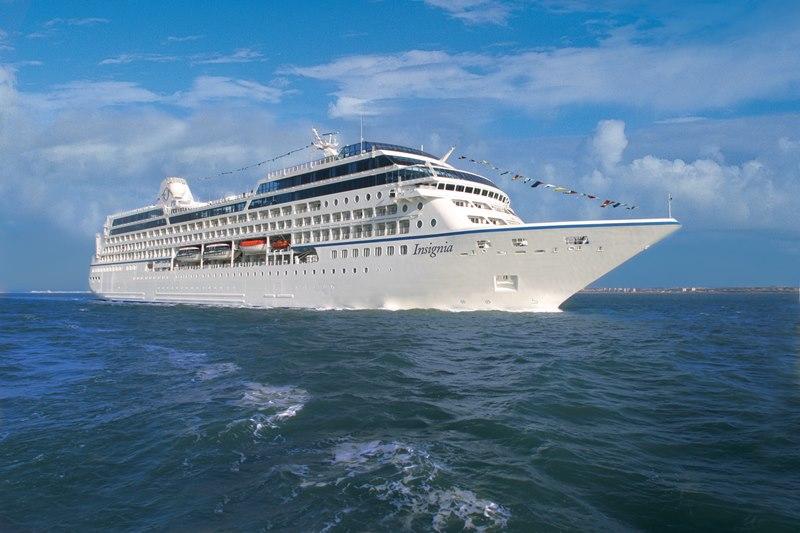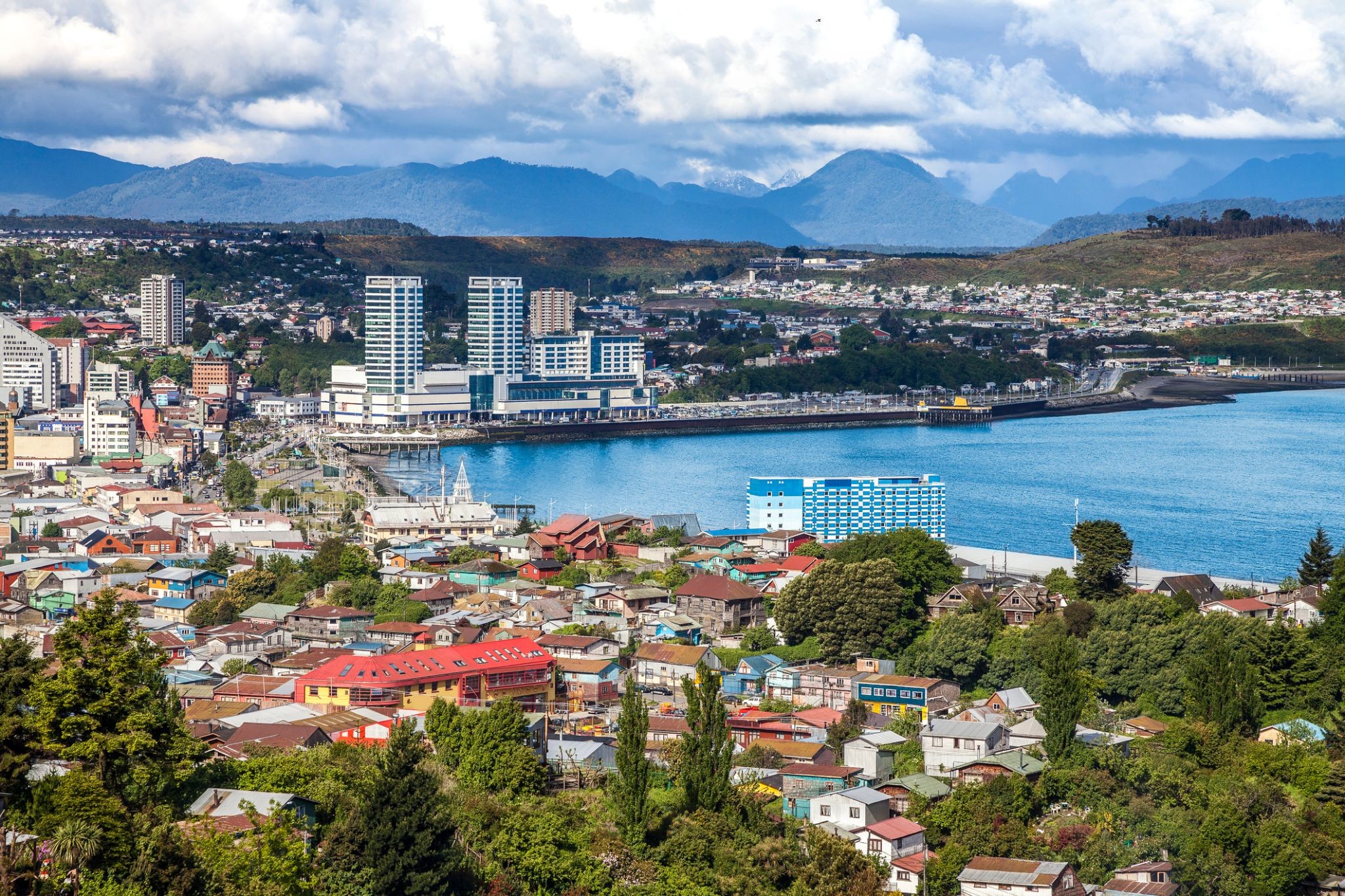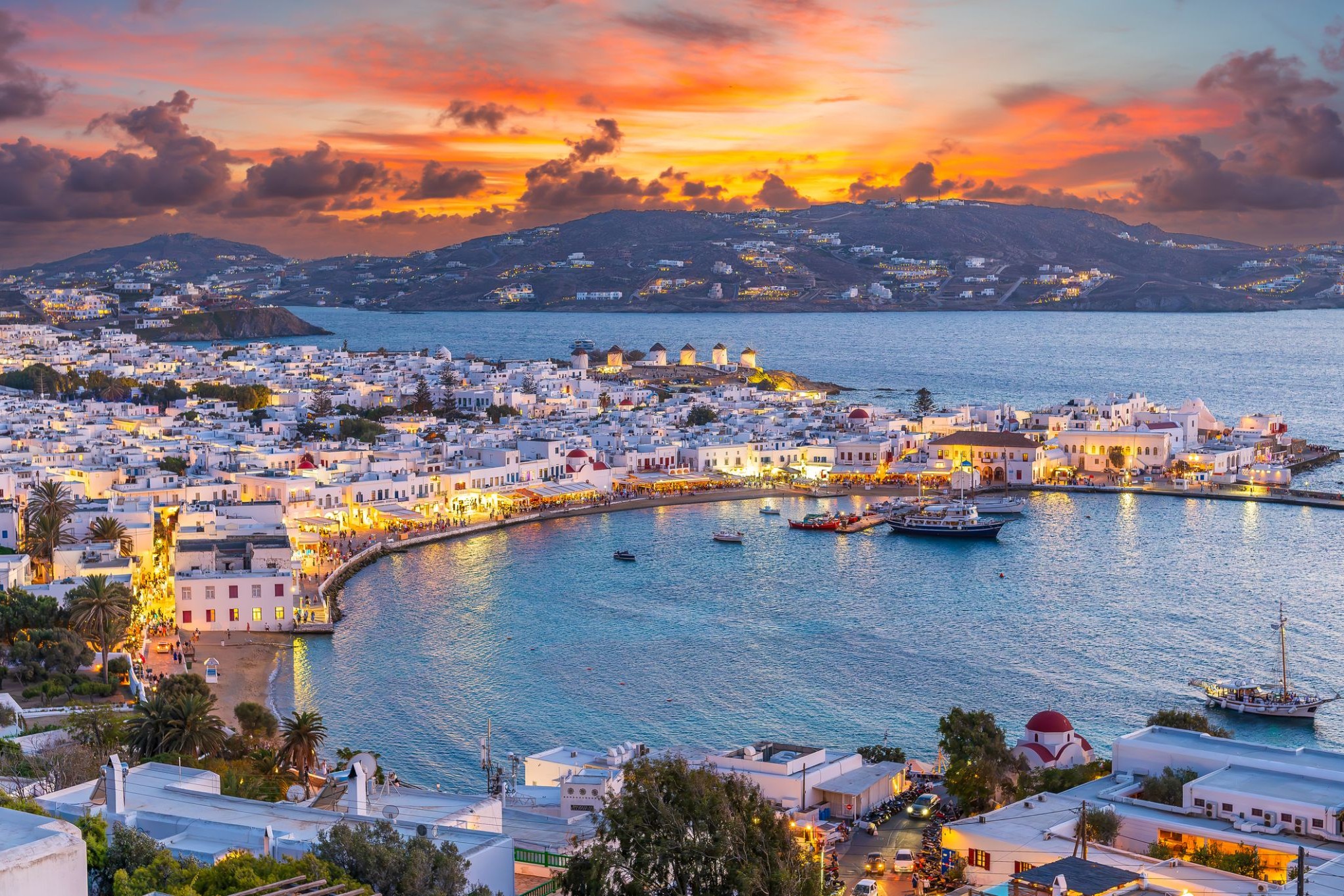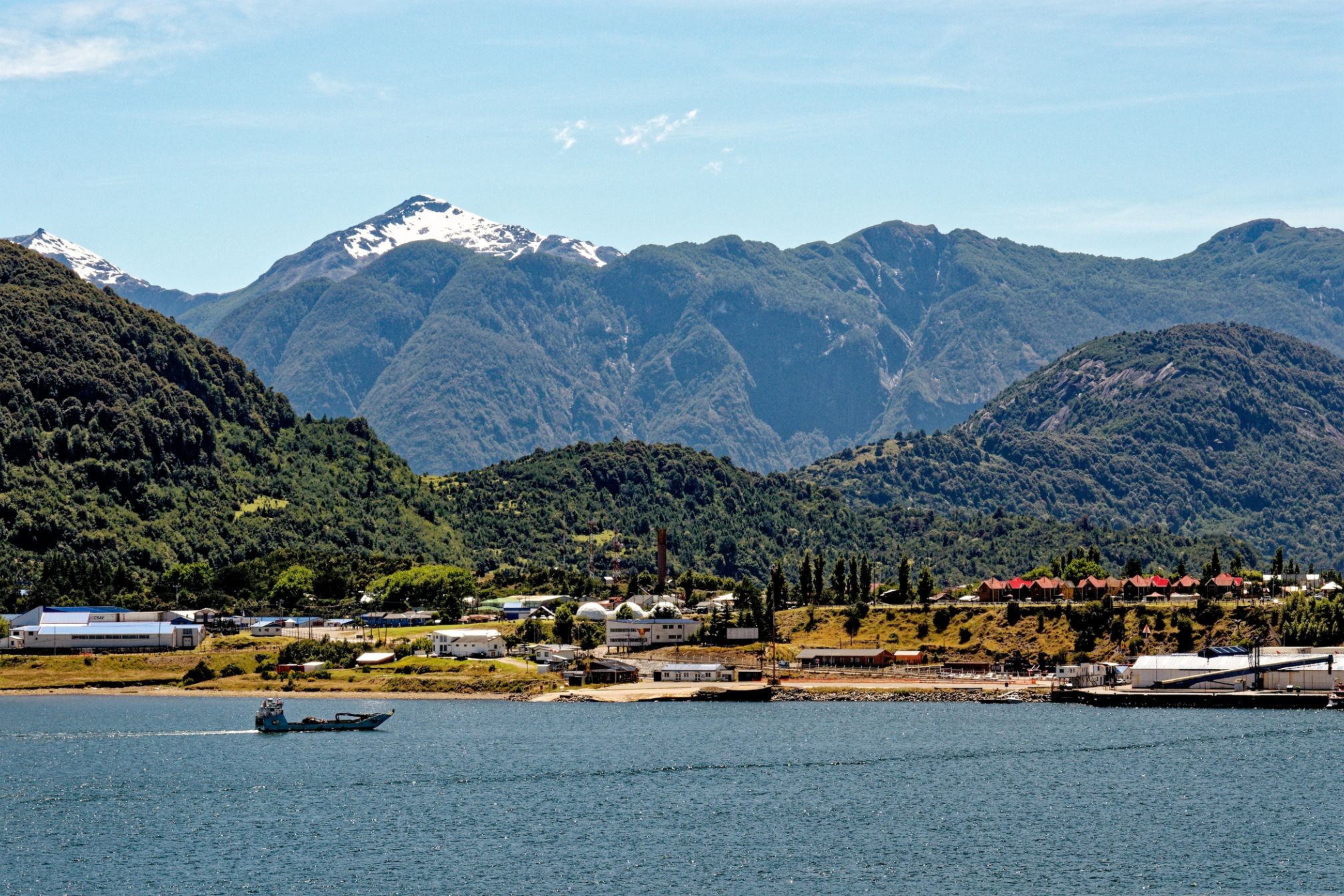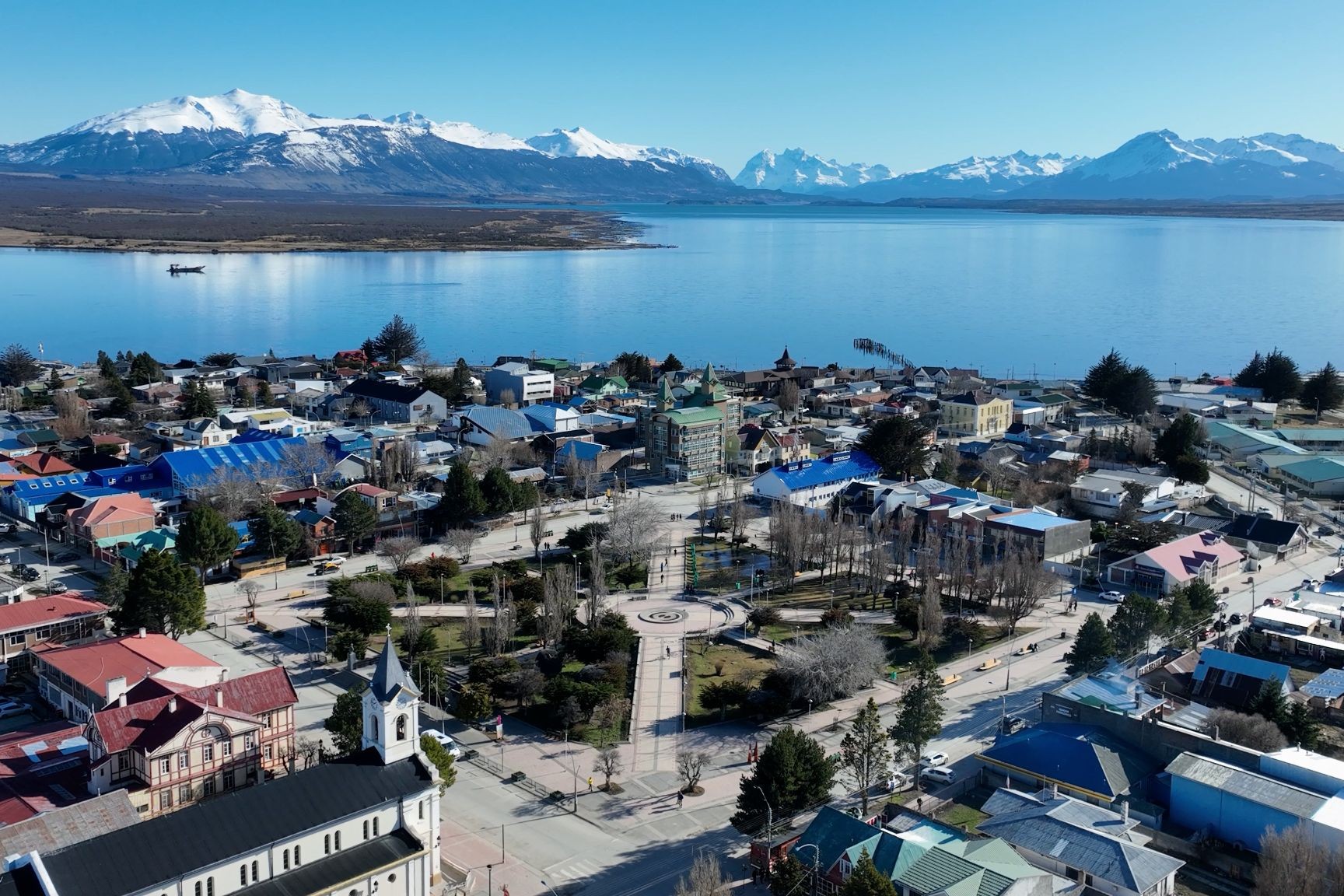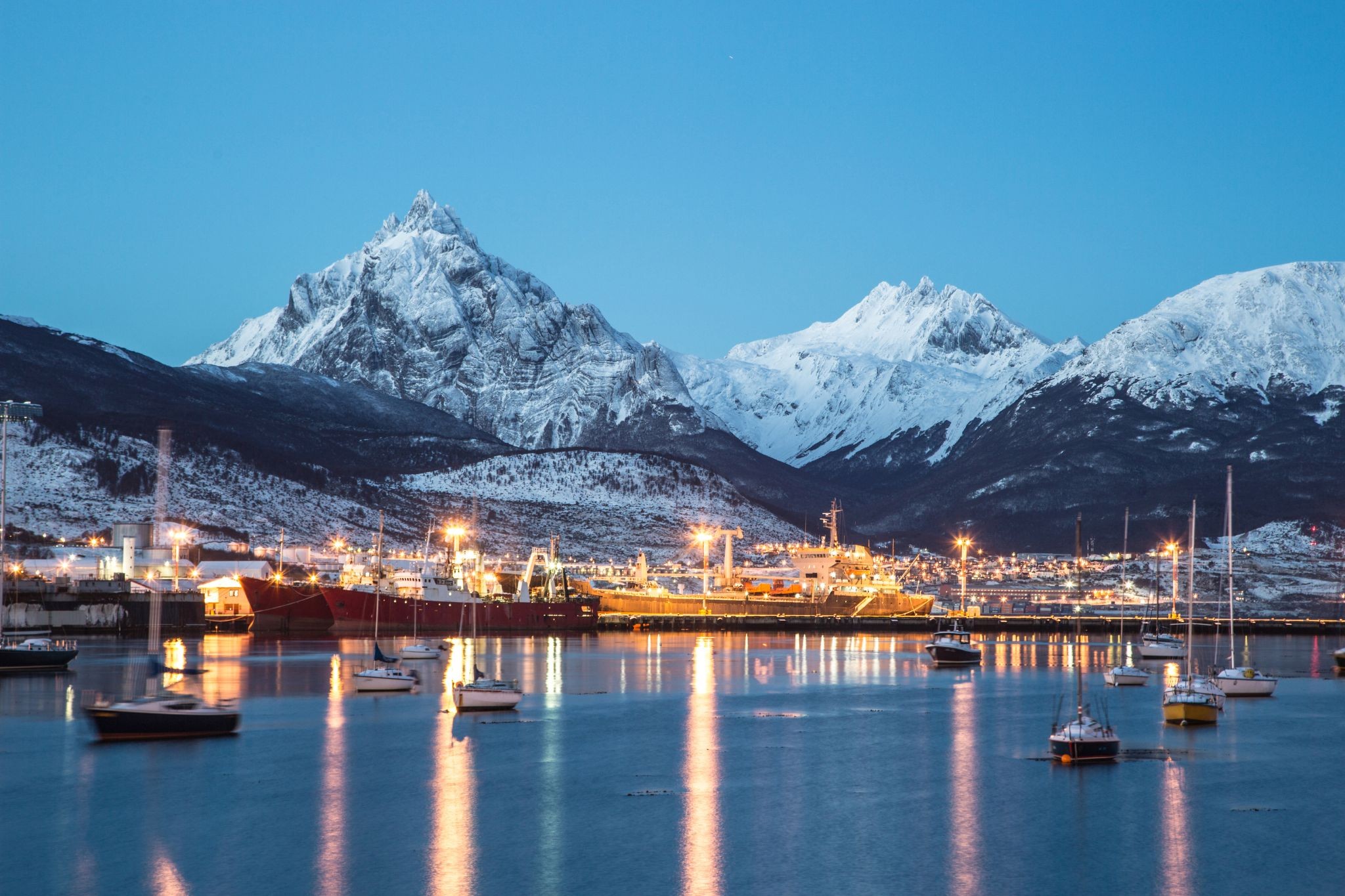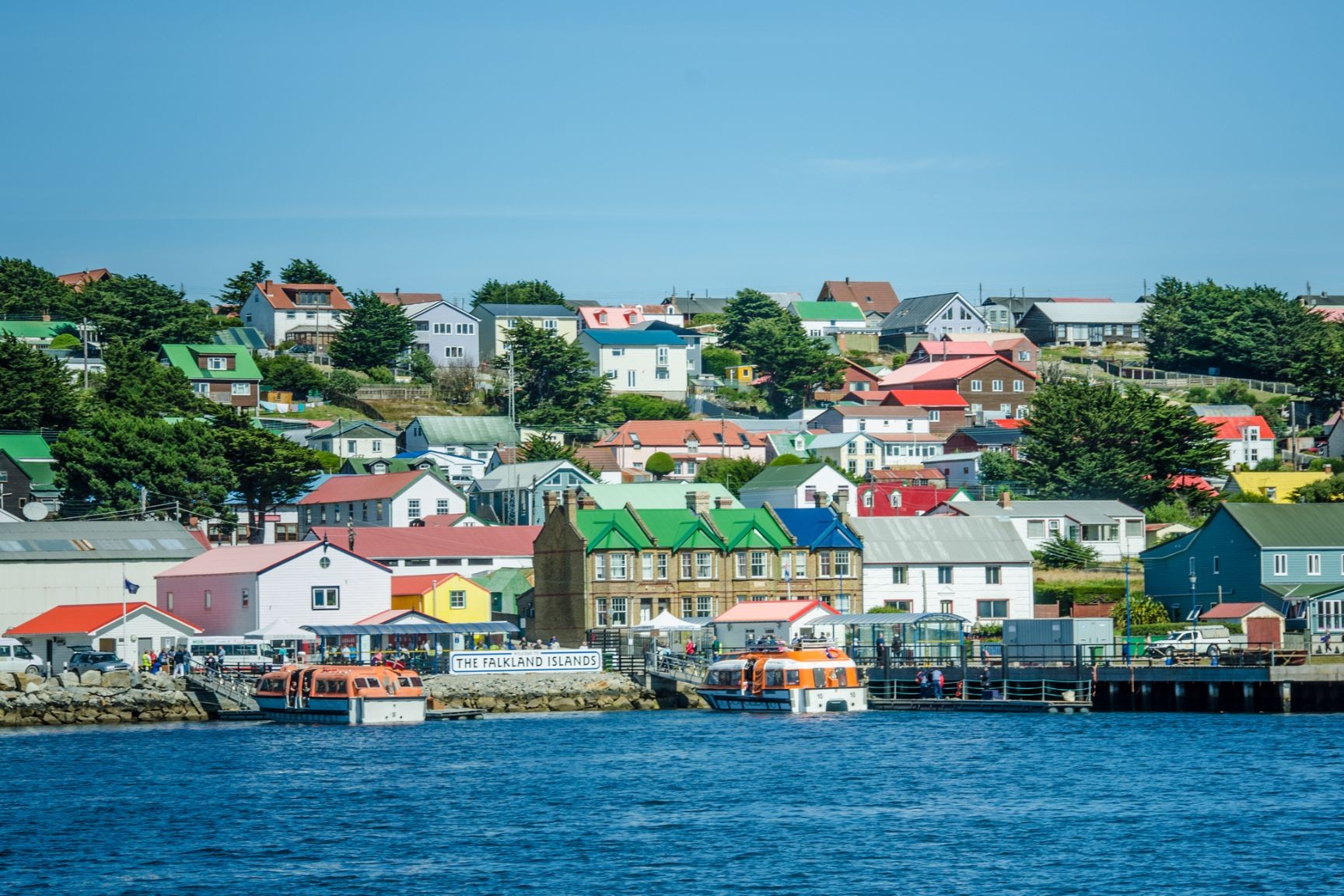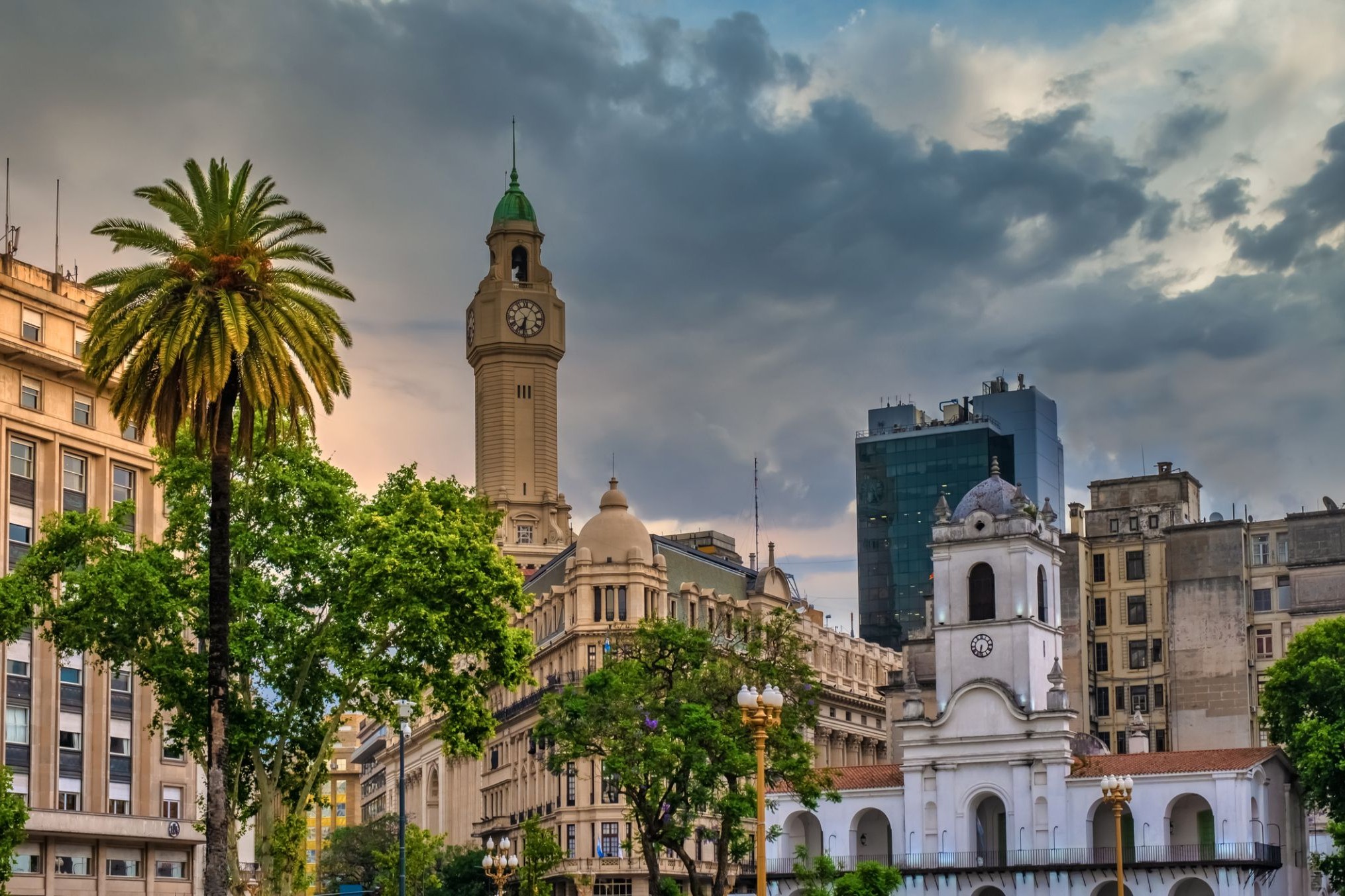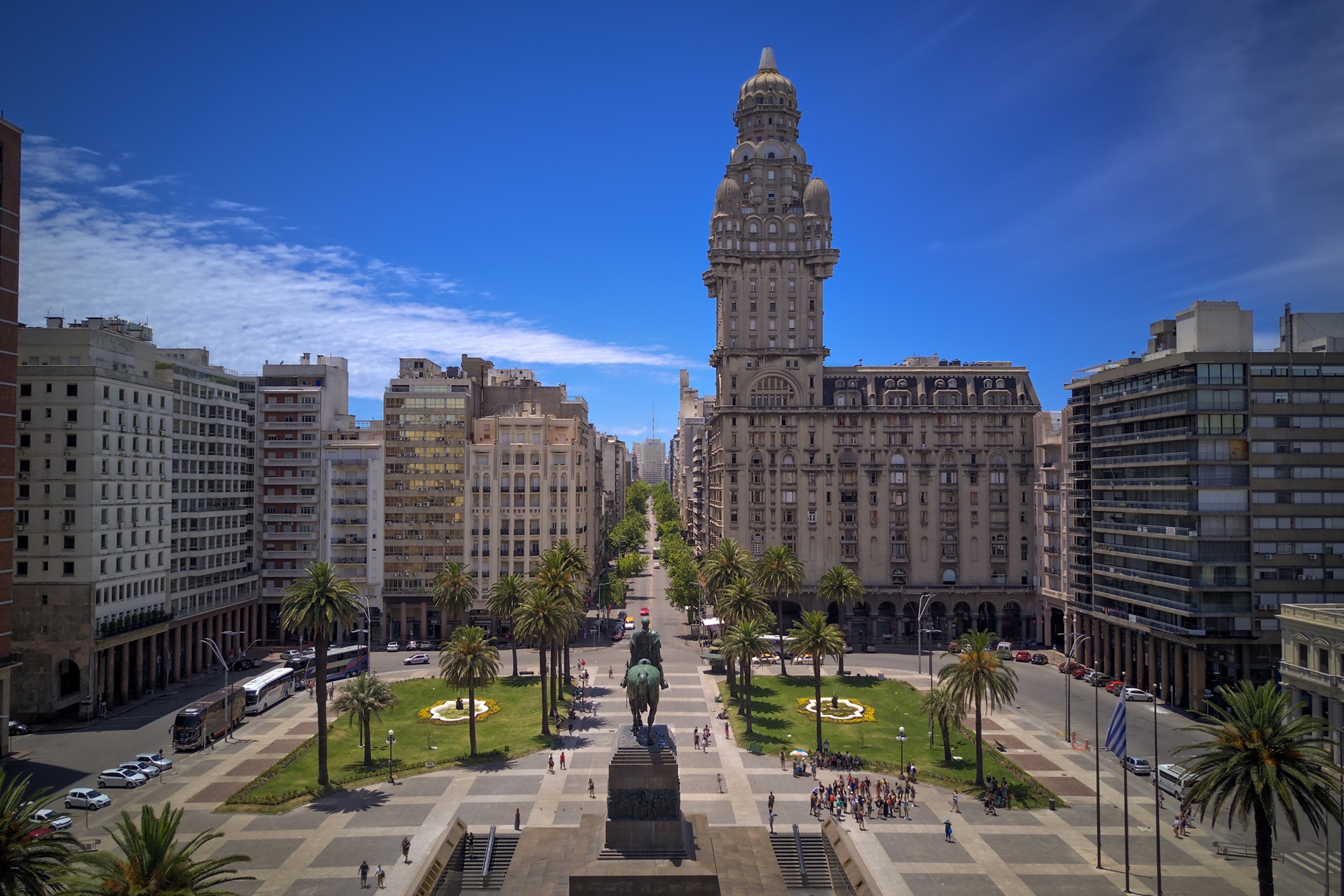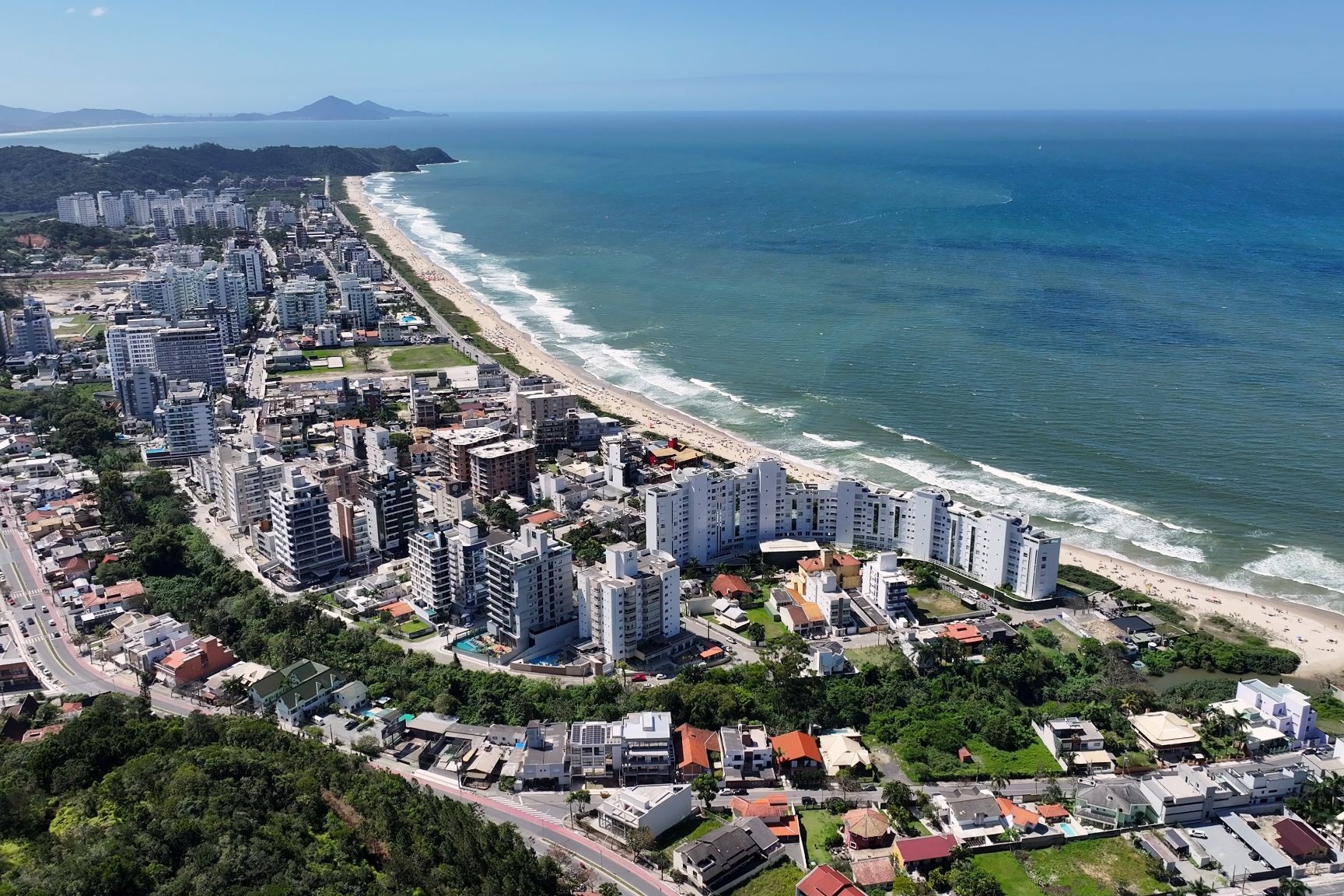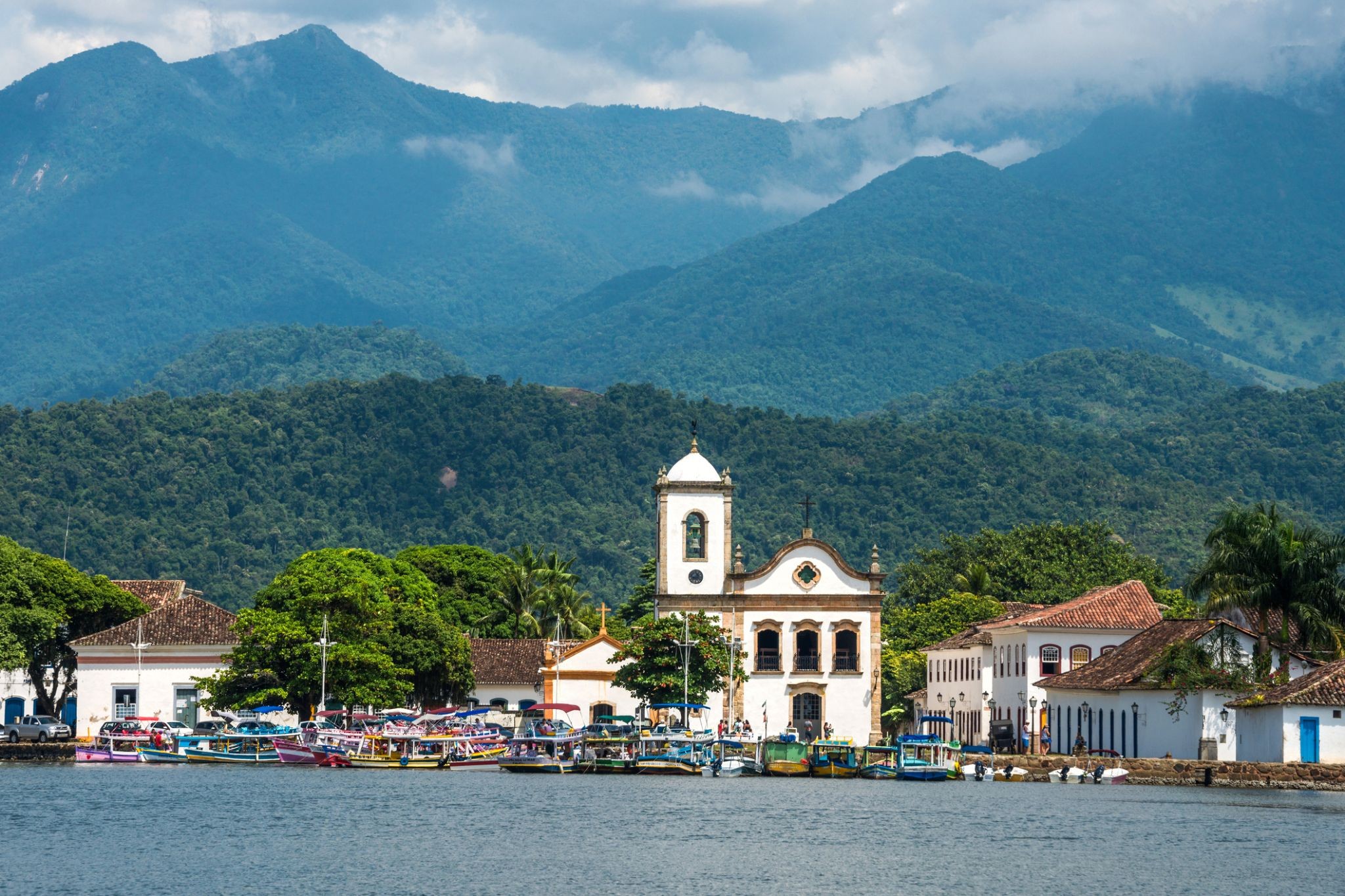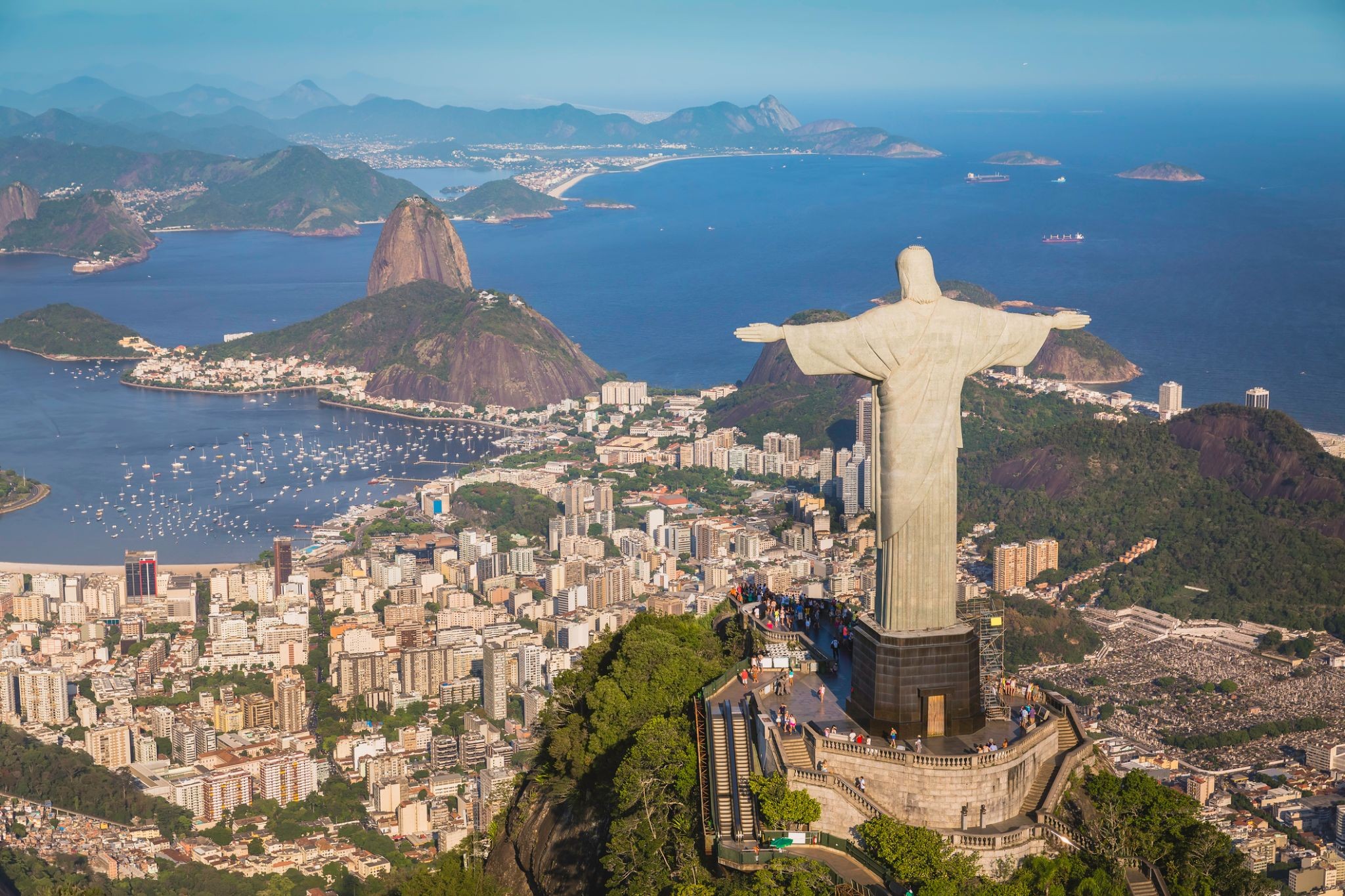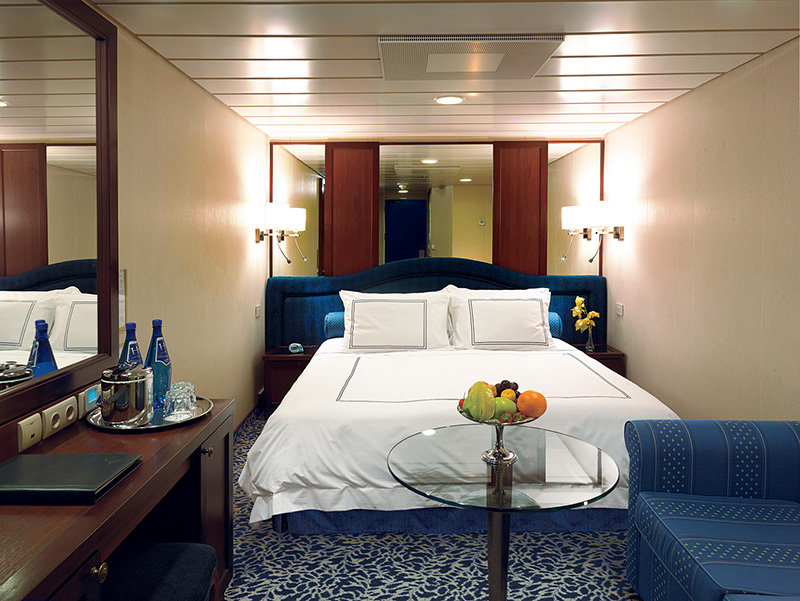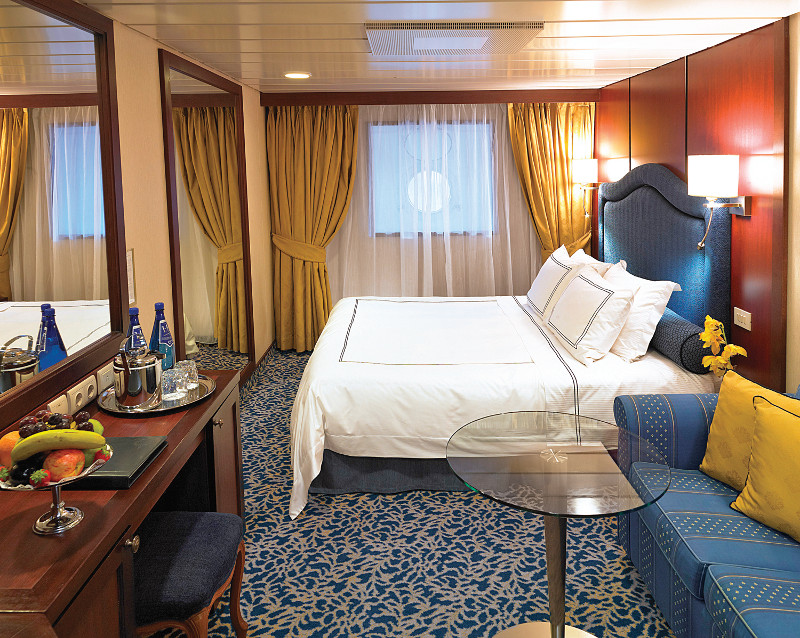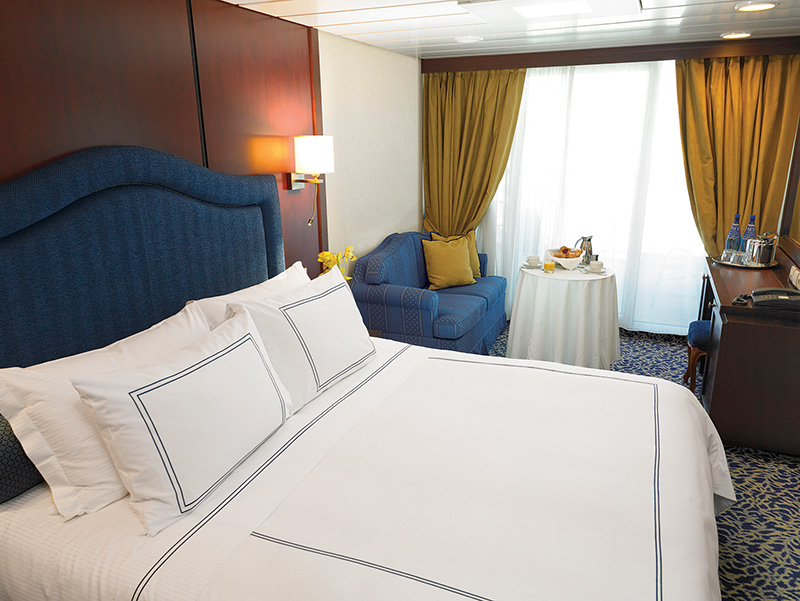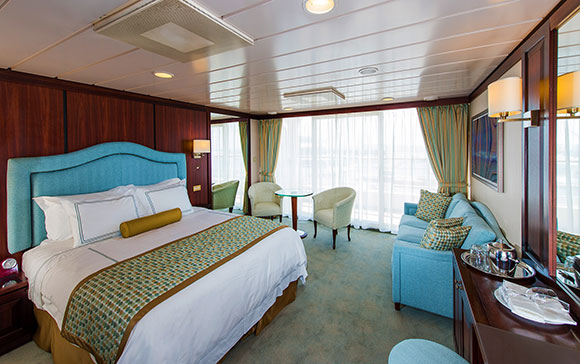
Rejs 30 941 183
Rozdroże kapitana Drake'a
| Firma : Oceania Cruises |
| Statek : Insignia |
| Data rozpoczęcia : niedz. 14 lut 2027 |
| Data zakończenia : pt. 19 mar 2027 |
| Liczba nocy : 33 nocy |
Harmonogram
| Dzień | Data | Port | Wypłynięcie | Odpłynięcie |
|---|---|---|---|---|
| 1 | 14.02 niedz. | Santiago de Chile | 07:00 | 17:00 |
| 2 | 15.02 pon. | Dzień na morzu / Morze | ||
| 3 | 16.02 wt. | Puerto Montt / Chile | 09:00 | 19:00 |
| 4 | 17.02 śr. | Mykonos / Grecja | 07:00 | 16:00 |
| 5 | 18.02 czw. | Puerto Chacabuco / Chile | 09:00 | 18:00 |
| 6 | 19.02 pt. | LAGUNA SAN RAFAEL | 07:00 | 19:00 |
| 7 | 20.02 sob. | Dzień na morzu / Morze | ||
| 8 | 21.02 niedz. | Dzień na morzu / Morze | ||
| 9 | 22.02 pon. | Punta Arenas / Chile | 07:00 | |
| 10 | 23.02 wt. | Punta Arenas / Chile | 13:00 | |
| 11 | 24.02 śr. | Ushuaia / Argentyna | 08:00 | 18:00 |
| 12 | 25.02 czw. | Dzień na morzu / Morze | ||
| 13 | 26.02 pt. | Dzień na morzu / Morze | ||
| 14 | 27.02 sob. | Dzień na morzu / Morze | ||
| 15 | 28.02 niedz. | Dzień na morzu / Morze | ||
| 16 | 1.03 pon. | Dzień na morzu / Morze | ||
| 17 | 2.03 wt. | Port Stanley, Falklandy / Falkland islands | 07:00 | 16:00 |
| 18 | 3.03 śr. | Dzień na morzu / Morze | ||
| 19 | 4.03 czw. | Puerto Madryn / Argentyna | 08:00 | 18:00 |
| 20 | 5.03 pt. | Dzień na morzu / Morze | ||
| 21 | 6.03 sob. | Dzień na morzu / Morze | ||
| 22 | 7.03 niedz. | Buenos Aires / Argentyna | 06:00 | 18:00 |
| 23 | 8.03 pon. | Montevideo / Uruguay | 08:00 | 20:00 |
| 24 | 9.03 wt. | Punta del Este / Uruguay | 07:00 | 16:00 |
| 25 | 10.03 śr. | Rio Grande - Rio Grande do Sul / Brazylia | 11:00 | 20:00 |
| 26 | 11.03 czw. | Dzień na morzu / Morze | ||
| 27 | 12.03 pt. | Florianopolis / Brazylia | 07:00 | 19:00 |
| 28 | 13.03 sob. | Itažai / Brazylia | 07:00 | 17:00 |
| 29 | 14.03 niedz. | Santos / Brazylia | 09:00 | 18:00 |
| 30 | 15.03 pon. | Parati / Brazylia | 08:00 | 18:00 |
| 31 | 16.03 wt. | Wielka Wyspa Ilha Grande / Brazylia | 08:00 | 18:00 |
| 32 | 17.03 śr. | Armacao dos Buzios / Brazylia | 08:00 | 18:00 |
| 33 | 18.03 czw. | Rio de Janeiro / Brazylia | 08:00 | |
| 34 | 19.03 pt. | Rio de Janeiro / Brazylia | 16:00 |
-
 Dzień 1: 07:00-17:00
Dzień 1: 07:00-17:00Santiago de Chile
-
 Dzień 2:
Dzień 2:Dzień na morzu / Morze
-
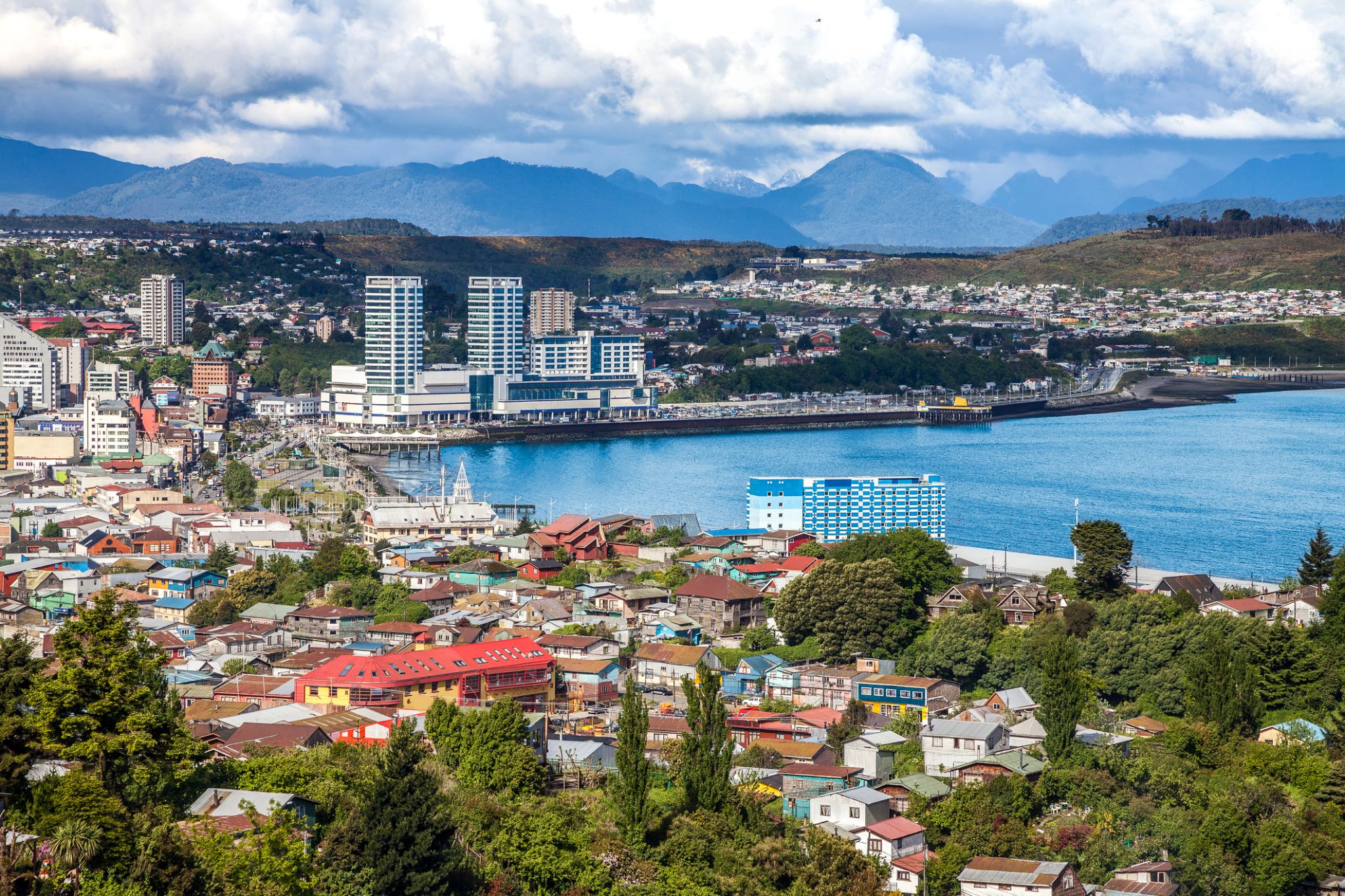 Dzień 3: 09:00-19:00
Dzień 3: 09:00-19:00Puerto Montt / Chile
Puerto Montt is a port city and commune in southern Chile, located at the northern end of the Reloncaví Sound in the Llanquihue Province, Los Lagos Region, 1,055 km to the south of the capital, Santiago. The commune spans an area of 1,673 km2 (646 sq mi) and has a population of 245,902 in 2017. It is bounded by the communes of Puerto Varas to the north, Cochamó to the east and southeast, Calbuco to the southwest and Maullín and Los Muermos to the west.
Founded as late as 1853 during the German colonization of southern Chile, Puerto Montt soon outgrew older neighboring cities due to its strategic position at the southern end of the Chilean Central Valley being a gateway city into Chiloé Archipelago, Llanquihue and Nahuel Huapi lakes and Western Patagonia.
Puerto Montt has gained renown and grown significantly due to the rise of Chile as the second largest salmon producer of the world during the 1990s and 2000s. However, the Chilean salmon aquaculture crisis of the late 2000s resulted at least temporarily in severe unemployment and exposed weaknesses in the local economy. The city's cultural heritage mixes elements of Chiloé culture with German heritage although the city has attracted a significant number of newcomers from all over Chile in the last 30 years due to employment opportunities.
-
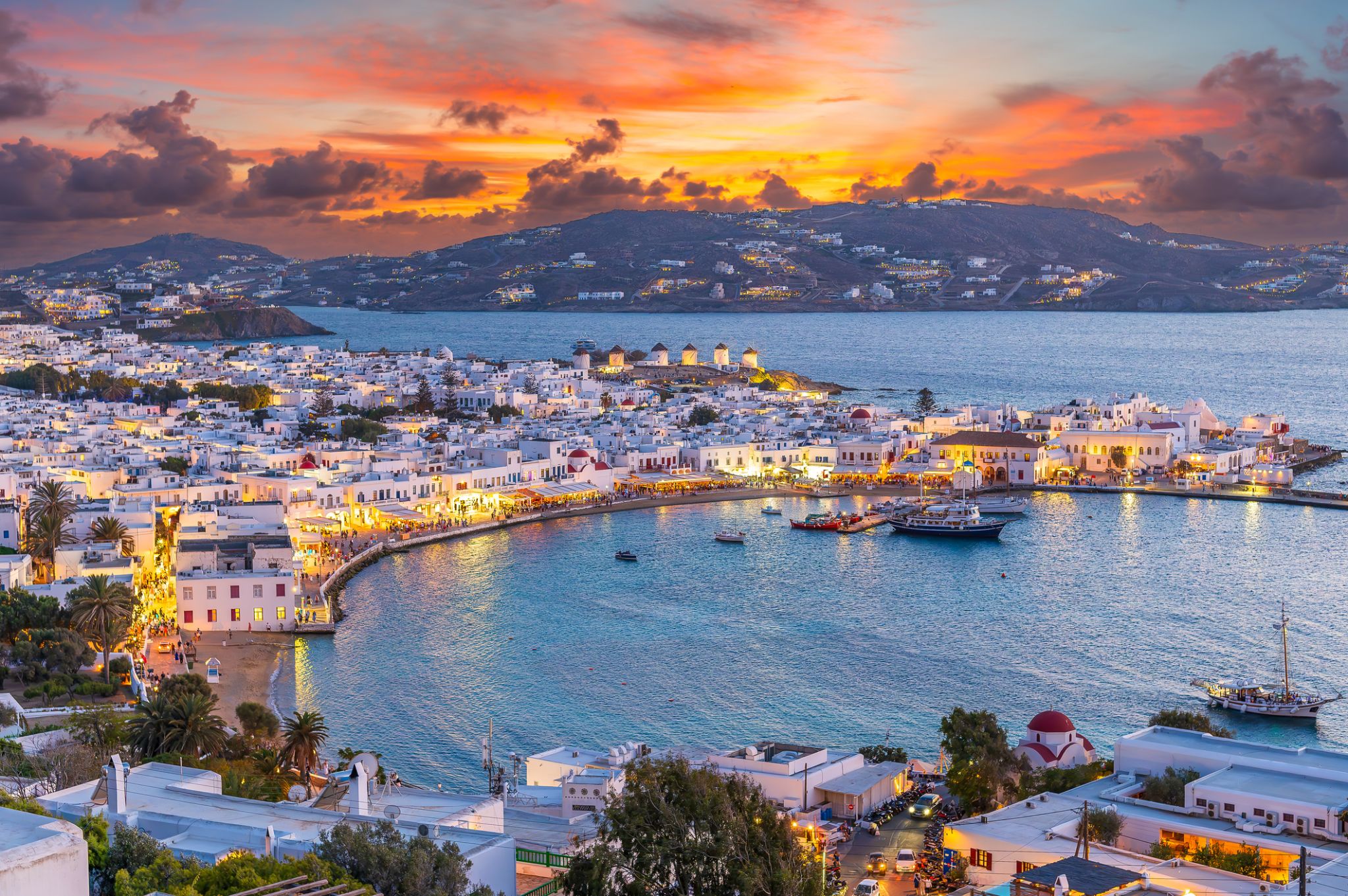 Dzień 4: 07:00-16:00
Dzień 4: 07:00-16:00Mykonos / Grecja
Mykonos is a Greek island, part of the Cyclades, lying between Tinos, Syros, Paros and Naxos. The island spans an area of 85.5 square kilometres (33.0 sq mi) and rises to an elevation of 341 metres (1,119 feet) at its highest point. There are 10,134 inhabitants (2011 census), most of whom live in the largest town, Mykonos, which lies on the west coast. The town is also known as Chora (i.e. the Town in Greek, following the common practice in Greece when the name of the island itself is the same as the name of the principal town).
-
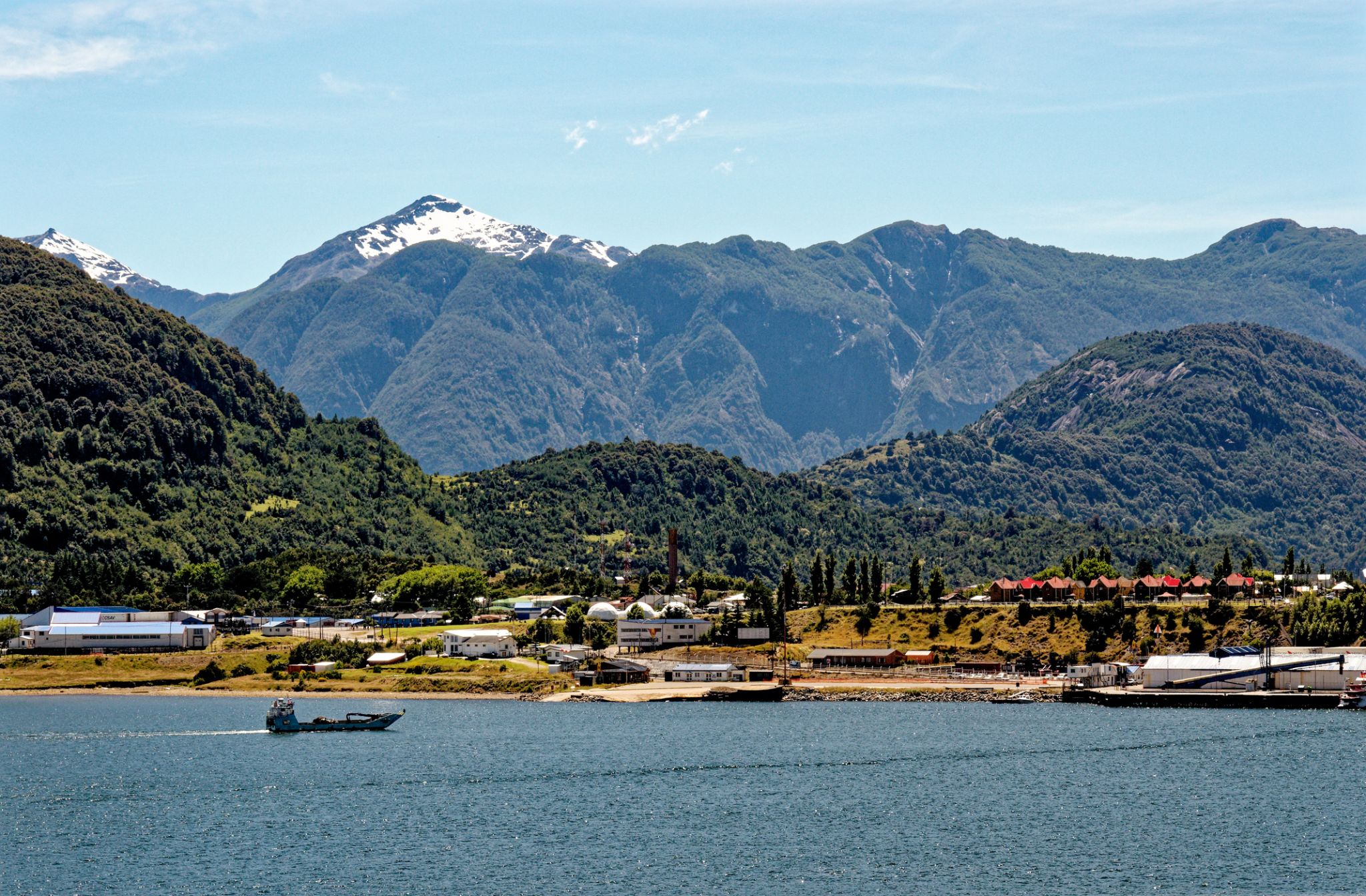 Dzień 5: 09:00-18:00
Dzień 5: 09:00-18:00Puerto Chacabuco / Chile
-
 Dzień 6: 07:00-19:00
Dzień 6: 07:00-19:00LAGUNA SAN RAFAEL
-
 Dzień 7:
Dzień 7:Dzień na morzu / Morze
-
 Dzień 8:
Dzień 8:Dzień na morzu / Morze
-
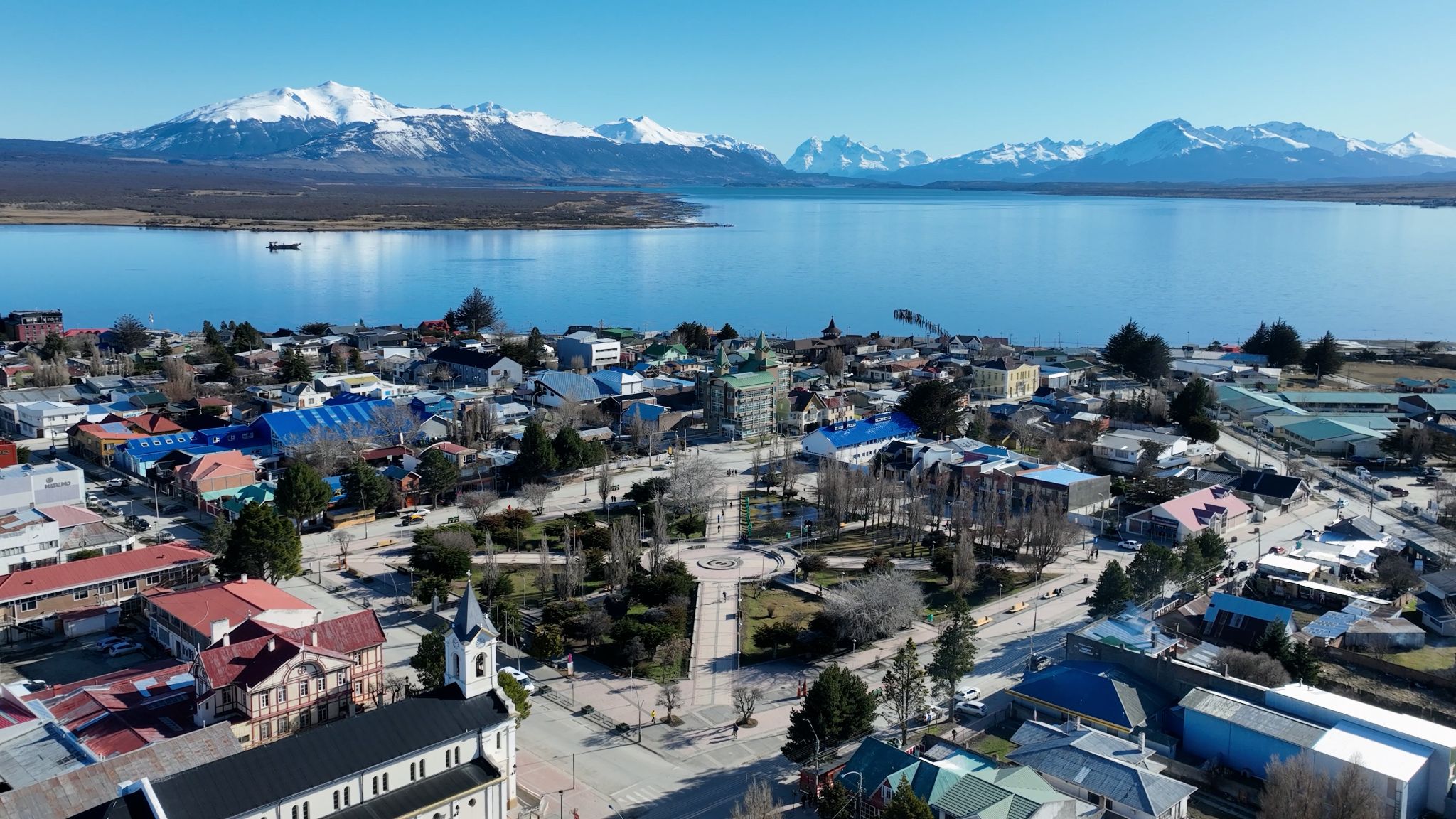 Dzień 9: 07:00
Dzień 9: 07:00Punta Arenas / Chile
-
 Dzień 10: 13:00
Dzień 10: 13:00Punta Arenas / Chile
-
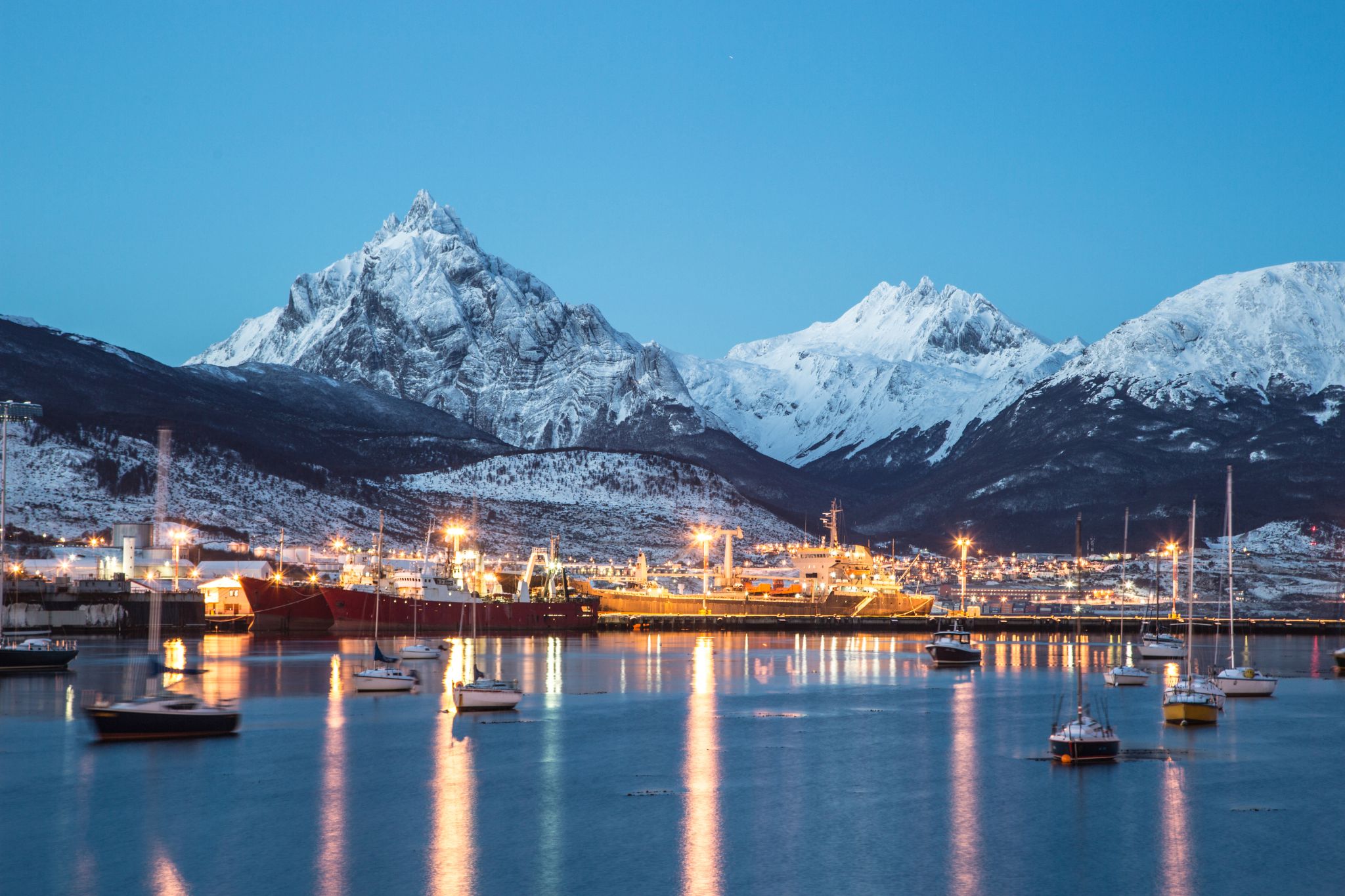 Dzień 11: 08:00-18:00
Dzień 11: 08:00-18:00Ushuaia / Argentyna
Ushuaia is the capital of Tierra del Fuego, Antártida e Islas del Atlántico Sur Province, Argentina. It is commonly regarded as the southernmost city in the world. Ushuaia is located in a wide bay on the southern coast of Isla Grande de Tierra del Fuego, bounded on the north by the Martial mountain range, and on the south by the Beagle Channel. It is the only municipality in the Department of Ushuaia, which has an area of 9,390 km2 (3,625 sq mi). It was founded October 12 of 1884 by Augusto Lasserreand is located on the shores of the Beagle Channel surrounded by the mountain range of the Martial Glacier, in the Bay of Ushuaia. Besides being an administrative center, it is a light industrial port and tourist hub.
-
 Dzień 12:
Dzień 12:Dzień na morzu / Morze
-
 Dzień 13:
Dzień 13:Dzień na morzu / Morze
-
 Dzień 14:
Dzień 14:Dzień na morzu / Morze
-
 Dzień 15:
Dzień 15:Dzień na morzu / Morze
-
 Dzień 16:
Dzień 16:Dzień na morzu / Morze
-
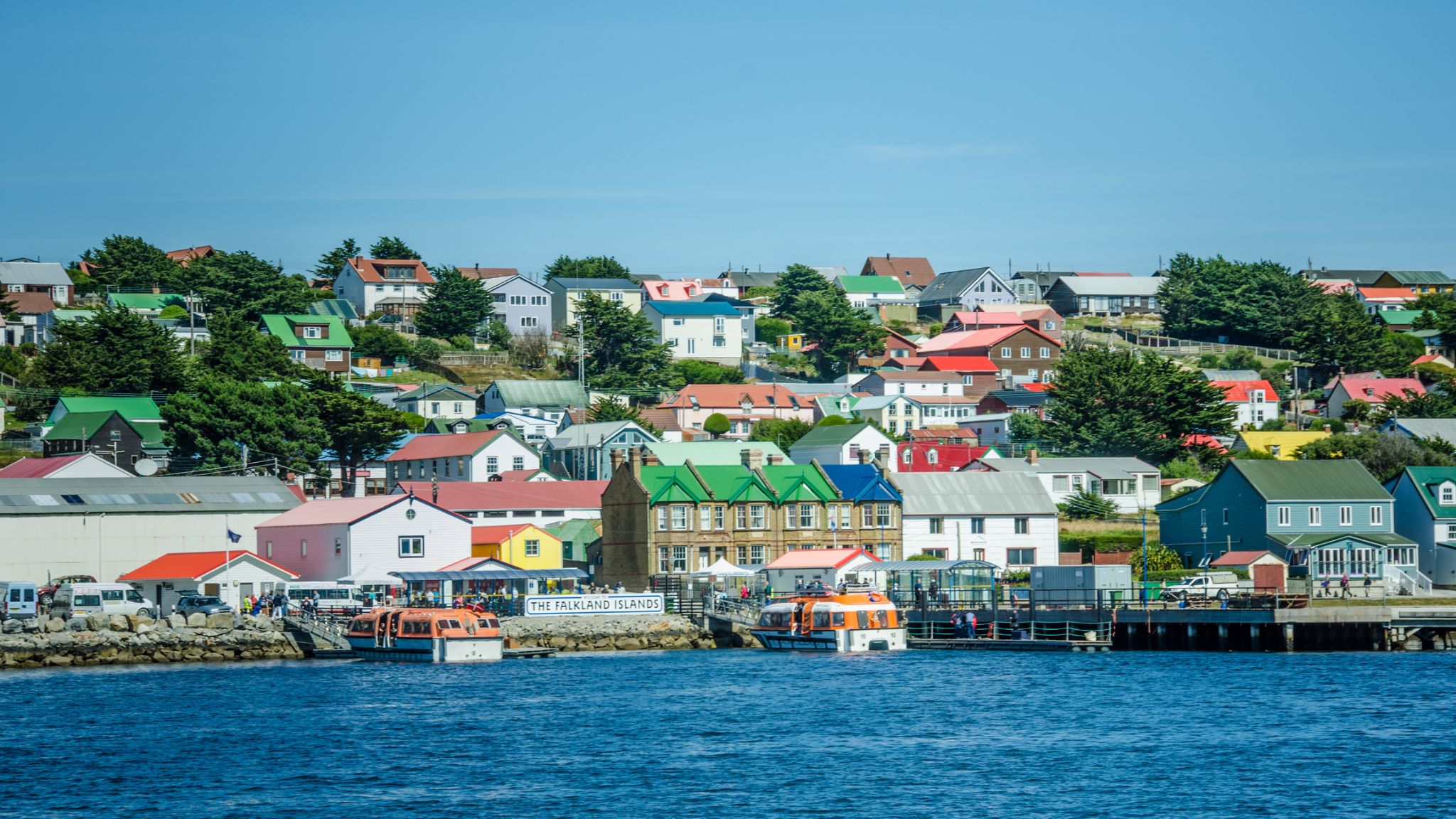 Dzień 17: 07:00-16:00
Dzień 17: 07:00-16:00Port Stanley, Falklandy / Falkland islands
Stanley is the capital of the Falkland Islands. It is located on the island of East Falkland, on a north-facing slope in one of the wettest parts of the islands. At the 2016 census, the town had a population of 2,460 the entire population of the Falkland Islands was 3,398 on Census Day on 9 October 2016
Stanley is represented by five members of the Legislative Assembly of the Falkland Islands, currently Stacy Bragger, Barry Elsby, Mark Pollard, Roger Spink and Leona Vidal Roberts.
Stanley is the main shopping centre on the islands and the hub of East Falkland's road network. Attractions include the Falkland Islands Museum, Government House – built in 1845 and home to the Governor of the Falkland Islands – and a golf course, as well as a whale-bone arch, a totem pole, several war memorials and the shipwrecks in its harbour. The Falkland Islands Company owns several shops. Stanley has four pubs, 11 hotels and guesthouses, three restaurants, a fish and chip shop and the main tourist office. There are three churches, including the Anglican Christ Church Cathedral, the southernmost Anglican cathedral in the world, and the Roman Catholic St. Mary's Church. A bomb disposal unit in the town is a legacy of the Falklands War.
The town hall serves as a post office, philatelic bureau, law court and dance hall. The police station also contains the islands' only prison, with a capacity of 13 in the cells.
The community centre includes a swimming pool (the only public one in the islands), a sports centre, library, and school. A grass football pitch is located by the community centre and hosts regular games.
Stanley Racecourse, located on the west side of Stanley, holds a two-day horse racing meeting every year on 26 and 27 December. The Christmas races have been held here for over 100 years.
Stanley Golf Course has an 18-hole course and a club house. It is also located to the west of Stanley.
King Edward VII Memorial Hospital is the islands' main hospital, with doctors' practice and surgery, radiology department, dental surgery and emergency facilities.
Several bus and taxi companies operate out of Stanley.
Stanley is also home to the Falkland Islands Radio Station (FIRS), the Stanley office of the British Antarctic Survey, and the office of the weekly Penguin News newspaper.
A nursery and garden centre is also here, in whose greenhouses some of the islands' vegetables are grown.
-
 Dzień 18:
Dzień 18:Dzień na morzu / Morze
-
 Dzień 19: 08:00-18:00
Dzień 19: 08:00-18:00Puerto Madryn / Argentyna
-
 Dzień 20:
Dzień 20:Dzień na morzu / Morze
-
 Dzień 21:
Dzień 21:Dzień na morzu / Morze
-
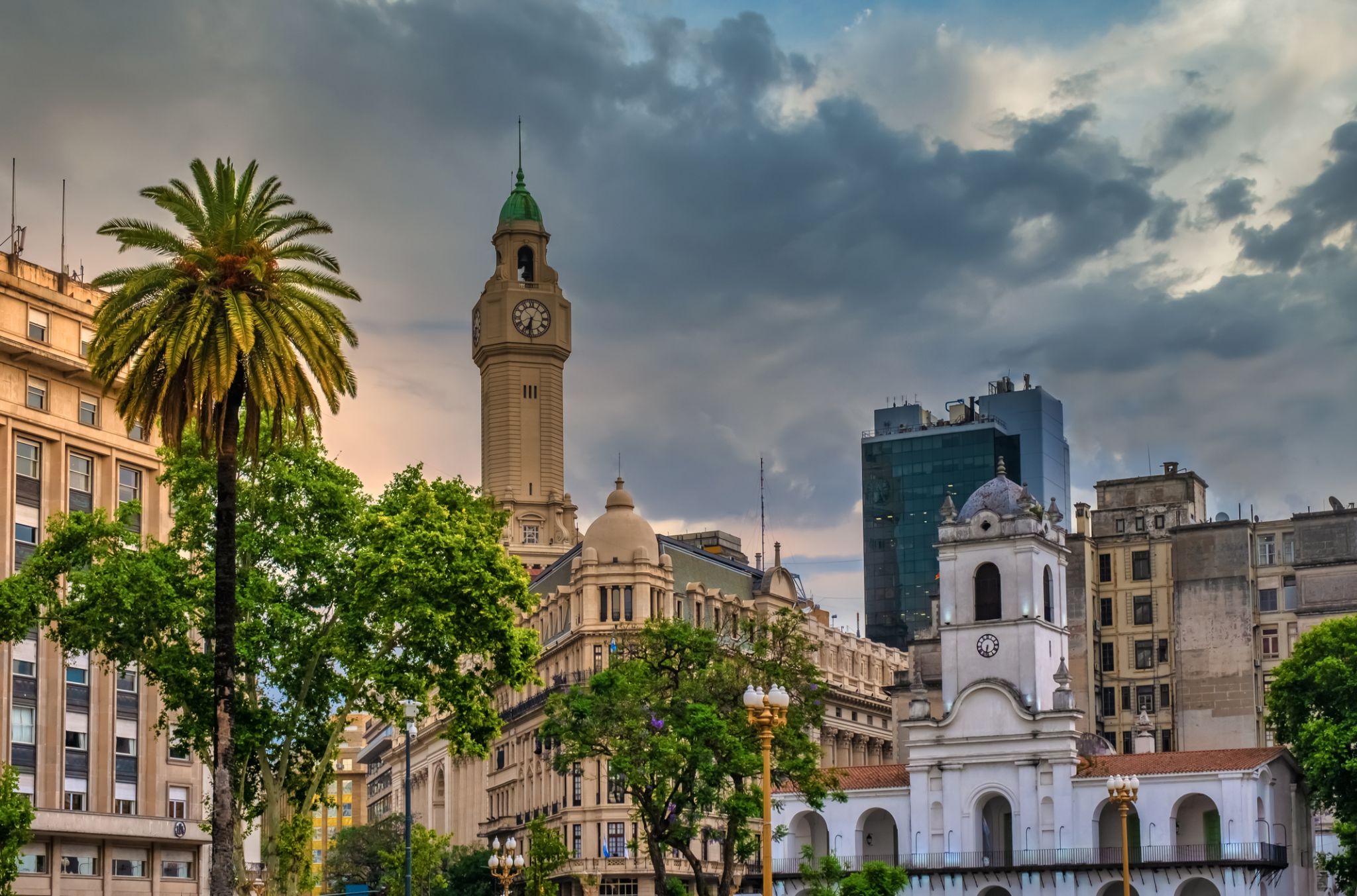 Dzień 22: 06:00-18:00
Dzień 22: 06:00-18:00Buenos Aires / Argentyna
the capital city and chief port of Argentina, in the eastern central part of the country, on the Plata River; population 3,042,600 (est. 2008).
-
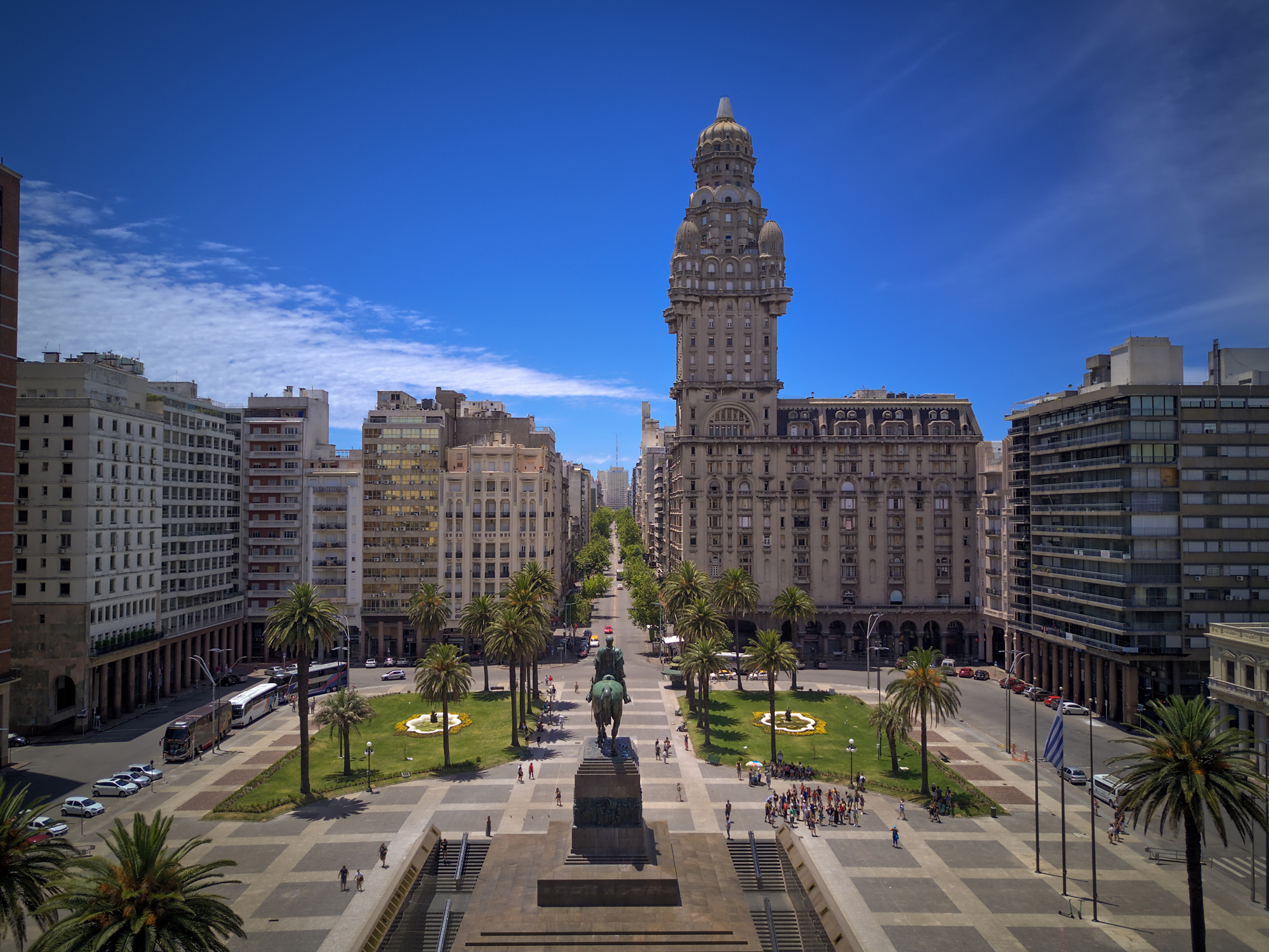 Dzień 23: 08:00-20:00
Dzień 23: 08:00-20:00Montevideo / Uruguay
Montevideo is the capital and largest city of Uruguay. According to the 2011 census, the city proper has a population of 1,319,108 (about one-third of the country's total population) in an area of 201 square kilometres (78 sq mi). The southernmost capital city in the Americas, Montevideo is situated on the southern coast of the country, on the northeastern bank of the Río de la Plata.
The city was established in 1724 by a Spanish soldier, Bruno Mauricio de Zabala, as a strategic move amidst the Spanish-Portuguese dispute over the platine region. It was also under brief British rule in 1807. Montevideo is the seat of the administrative headquarters of Mercosur and ALADI, Latin America’s leading trade blocs, a position that entailed comparisons to the role of Brussels in Europe.
-
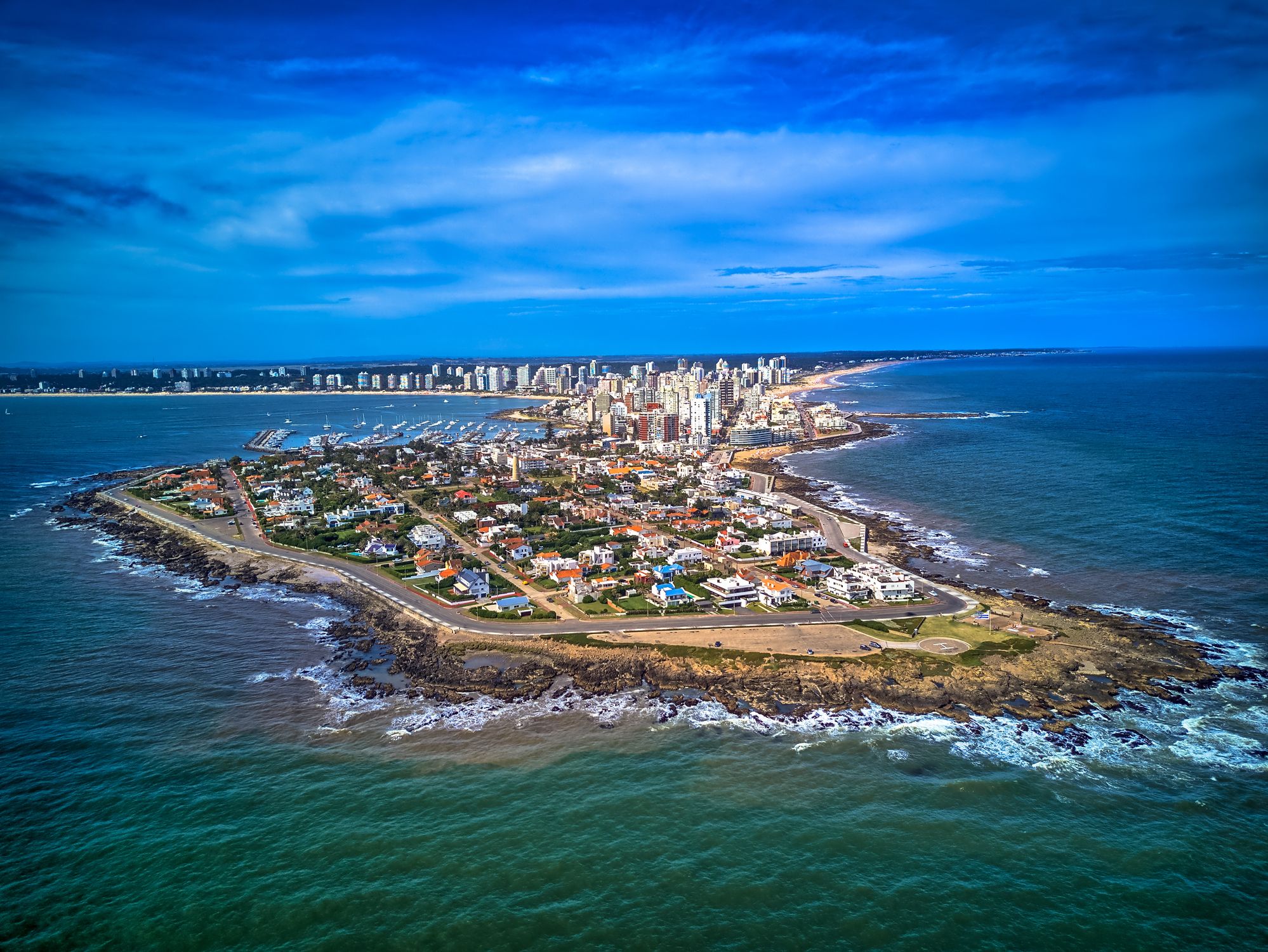 Dzień 24: 07:00-16:00
Dzień 24: 07:00-16:00Punta del Este / Uruguay
Punta del Este — urugwajski kurort nad Atlantykiem
Punta del Este to jeden z najsłynniejszych kurortów Ameryki Południowej, położony na południowym wybrzeżu Urugwaju, gdzie spotykają się wody Oceanu Atlantyckiego i estuarium La Platy. Miasto słynie z kontrastów — luksusowe dzielnice z nowoczesnymi wieżowcami, jachtami i wykwintnymi restauracjami sąsiadują z cichymi, piaszczystymi plażami, malowniczymi wydmami i falami idealnymi do surfowania. Nazywane jest „Monako Ameryki Południowej” ze względu na swoją luksusową infrastrukturę i popularność wśród międzynarodowych celebrytów.
Poza plażami, Punta del Este oferuje wiele atrakcji kulturalnych i przyrodniczych: rzeźba „La Mano”, która stała się symbolem miasta, muzeum sztuki współczesnej Ralli oraz pobliskie wyspy z fokami. Warto też odwiedzić artystyczną dzielnicę La Barra lub podziwiać zachód słońca przy latarni morskiej. W sezonie letnim (grudzień–luty) miasto tętni życiem, przyciągając turystów z całego świata szukających słońca, komfortu i dynamicznego życia nocnego.
-
 Dzień 25: 11:00-20:00
Dzień 25: 11:00-20:00Rio Grande - Rio Grande do Sul / Brazylia
-
 Dzień 26:
Dzień 26:Dzień na morzu / Morze
-
 Dzień 27: 07:00-19:00
Dzień 27: 07:00-19:00Florianopolis / Brazylia
-
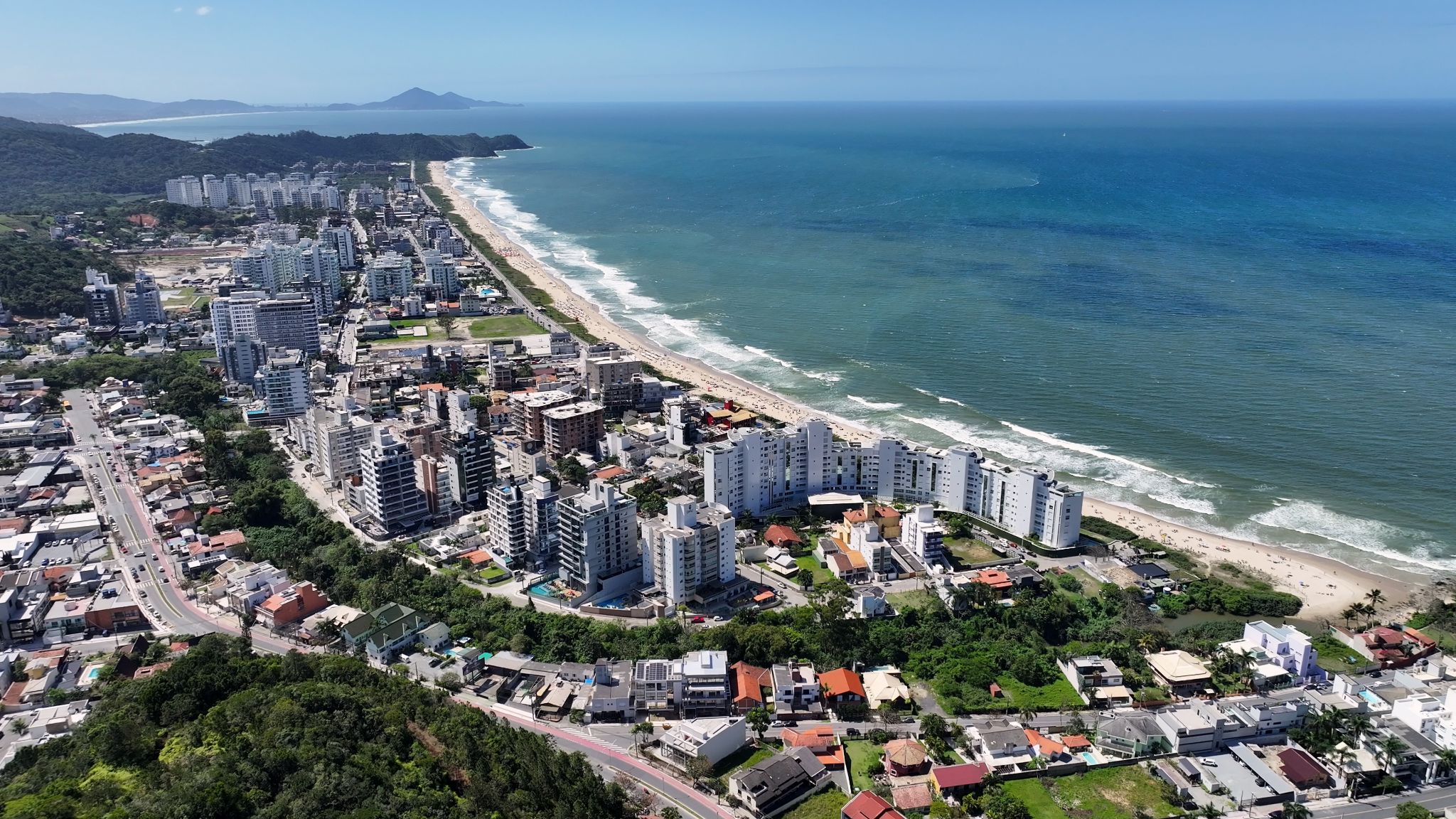 Dzień 28: 07:00-17:00
Dzień 28: 07:00-17:00Itažai / Brazylia
Itajaí to nadmorskie miasto w południowej Brazylii, w stanie Santa Catarina, znane z ruchliwego portu i rozwiniętej infrastruktury morskiej. Port Itajaí uważany jest za jeden z najważniejszych w kraju, szczególnie w eksporcie mięsa i produktów rolnych. Miasto przyciąga nie tylko gości biznesowych, ale i turystów, oferując unikalne połączenie przemysłowych krajobrazów z pięknem przyrody. Spacerując promenadą, można podziwiać ogromne statki towarowe na tle Oceanu Atlantyckiego i skosztować świeżych owoców morza w licznych restauracjach.
Pomimo biznesowego charakteru, Itajaí oferuje spokojne plaże, przytulne parki i wydarzenia kulturalne. Jednym z najbardziej znanych jest Festa do Mare – święto marynarzy z paradami, koncertami i rybnymi przysmakami. W pobliżu znajduje się kurort Balneário Camboriú – jedno z najpopularniejszych miejsc wypoczynku plażowego w Brazylii. Itajaí to miejsce, gdzie morze, kultura i dynamiczne życie południowej Brazylii łączą się w jedną całość – idealne na krótki przystanek lub spokojne zwiedzanie regionu.
-
 Dzień 29: 09:00-18:00
Dzień 29: 09:00-18:00Santos / Brazylia
-
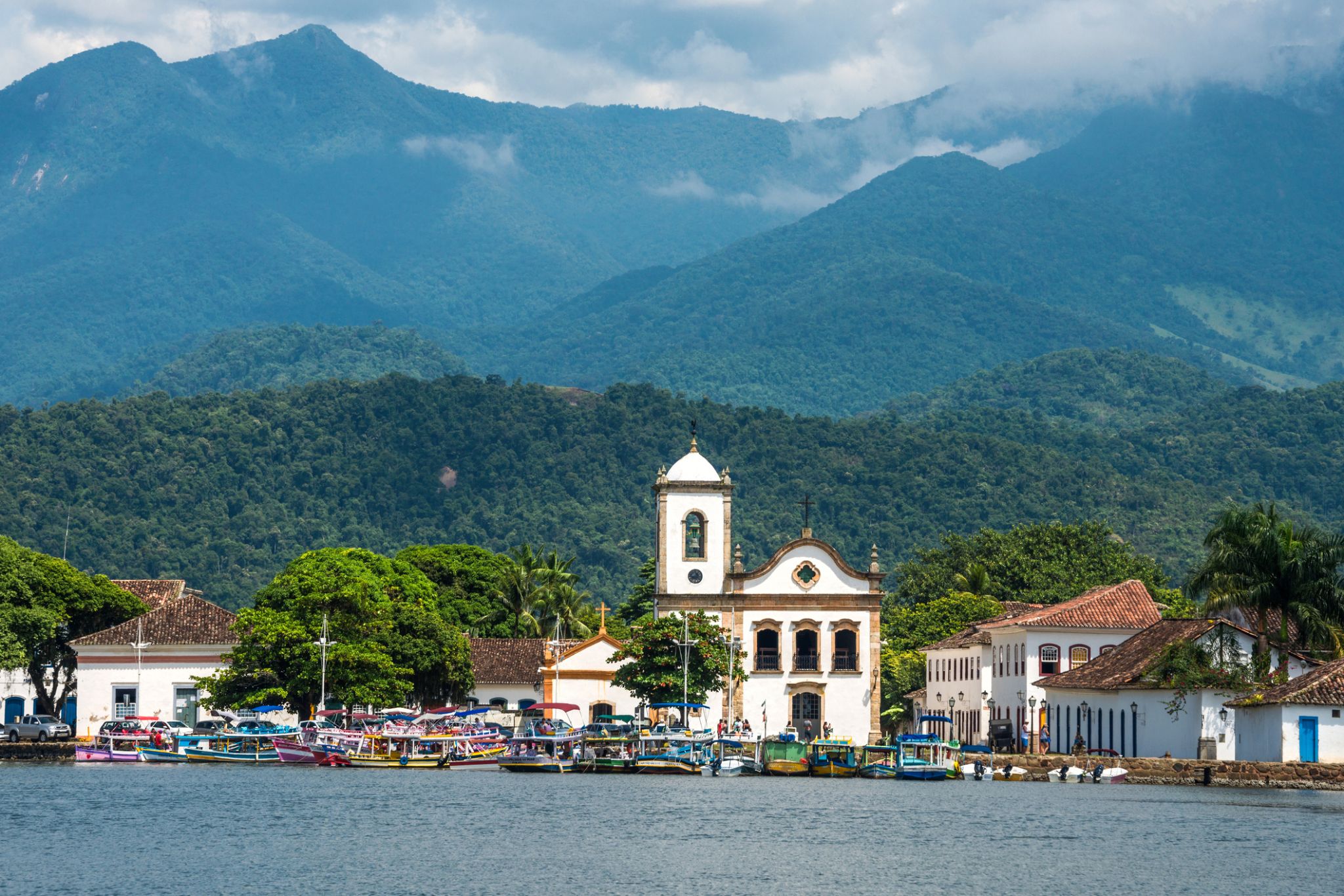 Dzień 30: 08:00-18:00
Dzień 30: 08:00-18:00Parati / Brazylia
-
 Dzień 31: 08:00-18:00
Dzień 31: 08:00-18:00Wielka Wyspa Ilha Grande / Brazylia
Wśród szmaragdowych fal u wybrzeży Brazylii kryje się Ilha Grande, która zachwyca dziką naturą i prawdziwym duchem przygody. Ta wyspa w stanie Rio de Janeiro niegdyś pełniła funkcję więzienia i kolonii dla trędowatych, a dziś jest idealnym miejscem dla tych, którzy chcą uciec od miejskiego zgiełku. Nie ma tu samochodów – zamiast dróg są ścieżki prowadzące przez dżunglę do plaż z białym piaskiem, krystalicznych lagun i wodospadów ukrytych w tropikalnym lesie.
Podróżni mogą odkrywać ponad 100 plaż, w tym słynną Lopes Mendes – uznawaną za jedną z najpiękniejszych na świecie. Rejsy do opuszczonych więzień, nurkowanie przy wrakach statków oraz wędrówki przez lasy Atlantyckie oferują niezliczone możliwości aktywnego wypoczynku. Ilha Grande to nie tylko kurort, ale żywe muzeum przyrody i historii, gdzie każdy krok przynosi coś nowego.
-
 Dzień 32: 08:00-18:00
Dzień 32: 08:00-18:00Armacao dos Buzios / Brazylia
Armação dos Búzios, często nazywane po prostu Búzios, to nadmorskie miasteczko i gmina w stanie Rio de Janeiro w Brazylii. W 2012 roku liczyło 23 463 mieszkańców i zajmowało powierzchnię 69 km². Dziś Búzios jest popularnym miejscem wypoczynku, szczególnie wśród Brazylijczyków i Argentyńczyków.
Na początku XX wieku Búzios było niemal nieznaną wioską rybacką. Pozostało takie aż do 1964 roku, kiedy to francuska aktorka Brigitte Bardot odwiedziła Búzios. Od tego czasu miejsce to stało się popularne wśród wyższych sfer Rio de Janeiro, pragnących uciec od miejskiego zgiełku i cieszyć się ponad 23 plażami, które oferuje półwysep. Miasto rozwinęło się w międzynarodowy cel turystyczny.
Dziś półwysep oferuje spokój, bezpośredni kontakt z naturą i malownicze widoki. Plaże po zachodniej stronie oferują spokojne, przejrzyste wody, podczas gdy te po wschodniej stronie, zwrócone ku otwartemu morzu, są bardziej dzikie i przyciągają surferów oraz entuzjastów sportów wodnych. Azeda, Ferradura, João Fernandes i Armação to jedne z najpopularniejszych plaż w mieście. Wieczorem główna ulica Búzios, Rua das Pedras, oferuje aktywne życie nocne oraz szeroki wybór sklepów i restauracji.
-
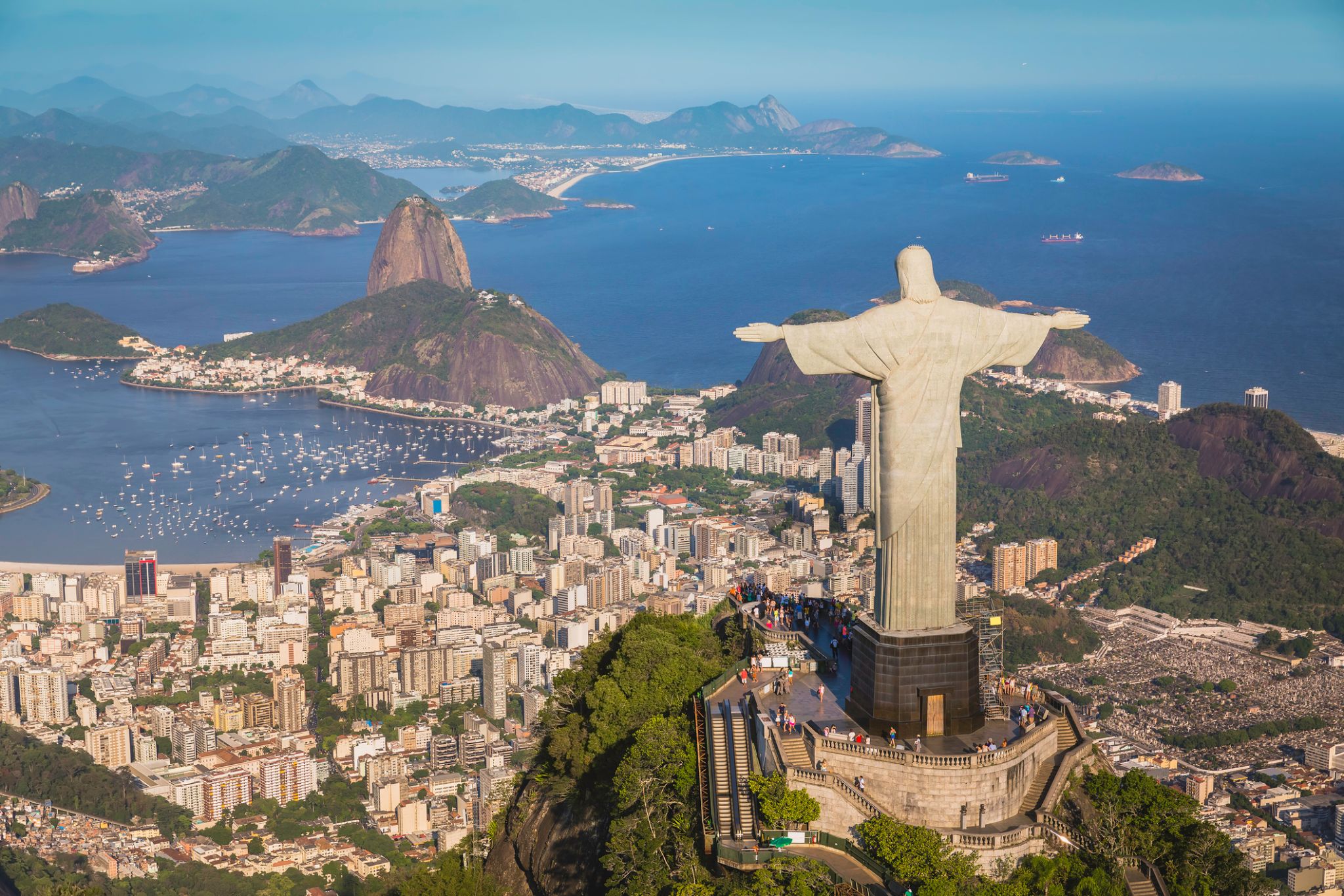 Dzień 33: 08:00
Dzień 33: 08:00Rio de Janeiro / Brazylia
Rio de Janeiro is the second-most populous municipality in Brazil and the sixth-most populous in the Americas. The metropolis is anchor to the Rio de Janeiro metropolitan area, the second-most populous metropolitan area in Brazil and sixth-most populous in the Americas. Rio de Janeiro is the capital of the state of Rio de Janeiro, Brazil's third-most populous state. Part of the city has been designated as a World Heritage Site, named "Rio de Janeiro: CariocaLandscapes between the Mountain and the Sea", by UNESCO on 1 July 2012 as a Cultural Landscape.
Founded in 1565 by the Portuguese, the city was initially the seat of the Captaincy of Rio de Janeiro, a domain of the Portuguese Empire. Later, in 1763, it became the capital of the State of Brazil, a state of the Portuguese Empire. In 1808, when the Portuguese Royal Court transferred itself from Portugal to Brazil, Rio de Janeiro became the chosen seat of the court of Queen Maria I of Portugal, who subsequently, in 1815, under the leadership of her son, the Prince Regent, and future King João VI of Portugal, raised Brazil to the dignity of a kingdom, within the United Kingdom of Portugal, Brazil, and Algarves. Rio stayed the capital of the pluricontinental Lusitanian monarchy until 1822, when the War of Brazilian Independence began. This is one of the few instances in history that the capital of a colonising country officially shifted to a city in one of its colonies. Rio de Janeiro subsequently served as the capital of the independent monarchy, the Empire of Brazil, until 1889, and then the capital of a republican Brazil until 1960 when the capital was transferred to Brasília.
-
 Dzień 34: 16:00
Dzień 34: 16:00Rio de Janeiro / Brazylia
Rio de Janeiro is the second-most populous municipality in Brazil and the sixth-most populous in the Americas. The metropolis is anchor to the Rio de Janeiro metropolitan area, the second-most populous metropolitan area in Brazil and sixth-most populous in the Americas. Rio de Janeiro is the capital of the state of Rio de Janeiro, Brazil's third-most populous state. Part of the city has been designated as a World Heritage Site, named "Rio de Janeiro: CariocaLandscapes between the Mountain and the Sea", by UNESCO on 1 July 2012 as a Cultural Landscape.
Founded in 1565 by the Portuguese, the city was initially the seat of the Captaincy of Rio de Janeiro, a domain of the Portuguese Empire. Later, in 1763, it became the capital of the State of Brazil, a state of the Portuguese Empire. In 1808, when the Portuguese Royal Court transferred itself from Portugal to Brazil, Rio de Janeiro became the chosen seat of the court of Queen Maria I of Portugal, who subsequently, in 1815, under the leadership of her son, the Prince Regent, and future King João VI of Portugal, raised Brazil to the dignity of a kingdom, within the United Kingdom of Portugal, Brazil, and Algarves. Rio stayed the capital of the pluricontinental Lusitanian monarchy until 1822, when the War of Brazilian Independence began. This is one of the few instances in history that the capital of a colonising country officially shifted to a city in one of its colonies. Rio de Janeiro subsequently served as the capital of the independent monarchy, the Empire of Brazil, until 1889, and then the capital of a republican Brazil until 1960 when the capital was transferred to Brasília.
